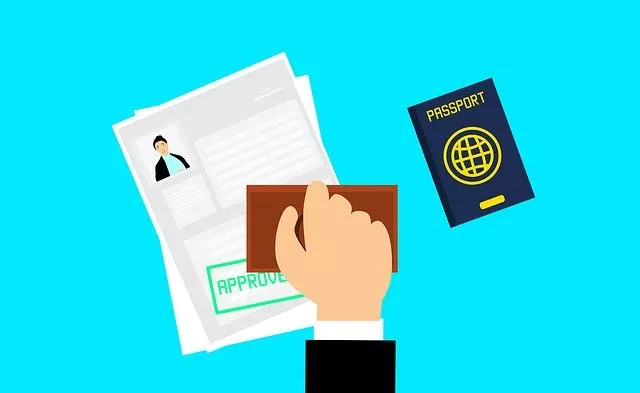Have you ever considered moving to Europe?
So listen up: Three major EU countries just changed their citizenship laws this year. One made it easier than ever, another nearly impossible, and a third is about to make changes that will shock you.
Citizenship rules in Europe are wildly different between countries, like the many ways the Portuguese invented to cook Bacalhau.
- One country demands proficiency in one of the hardest languages in the world.
- While another requires no formal language test at all.
- Some countries request that you live there for 10 years to naturalize, while others give you a passport after just 2 years of residency.
I’ve analyzed minimum residence requirements, language and civic test, and dual citizenship rules to rank the 27 EU Countries in terms of ease to obtain citizenship. The findings reveal significant disparities among the countries, highlighting those that offer the most streamlined processes for applicants. Based on the criteria evaluated, several nations also emerged as the top countries for permanent residence in Europe, providing accessible pathways for individuals seeking to establish themselves in the EU.
The difference between the hardest and easiest passport to obtain will blow your mind.
Some of these easy pathways are closing in 2025, so if you’ve been thinking about European citizenship, this ranking could save you years—or cost you the opportunity entirely.
The Four Key Factors That Make or Break Your EU Citizenship Dreams
I created this ranking system using four critical factors that reveal the real difficulty level to obtain each citizenship.
Residence time carries the most weight at 40% because it’s your biggest time investment.
But here’s where it gets tricky – many countries require permanent residence, but before you become a permanent resident, you must be a temporary resident.

So Austria, for example, requires 5 years of permanent residence to grant citizenship, but to obtain permanent residence it often takes another 5 years of temporary residence. So that’s actually 10 years total – that is what we consider in this ranking, the total time required.
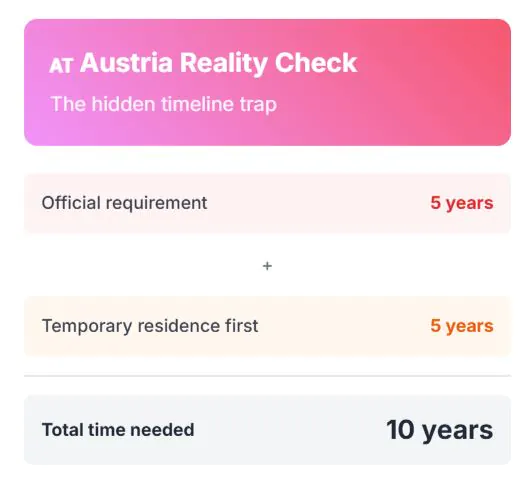
Language requirements get 30% weight, and it is interesting because I often see expats that only pay attention to the residence requirements, but end up failing to obtain citizenship because they never bothered to learn the language.
Let’s take, for example, Estonia. They require 8 years of residence – it is less than Italy which requires 10 years. But at the same time, Estonia also requires proficiency in Estonian – one of the most difficult languages in Europe. So often, people reach the 8 years of residence required, but still are not proficient enough in Estonian to obtain citizenship.
Integration tests get 20% weight, and dual citizenship restrictions get 10%.
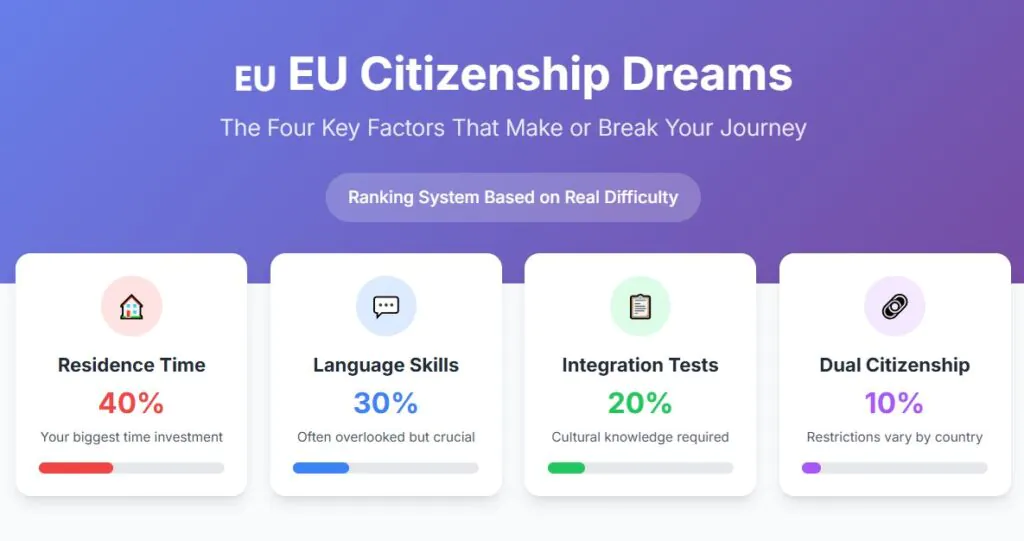
And a disclaimer: I will NOT include Spain in this ranking because they might be one of the hardest, or the absolute easiest country to obtain citizenship, and that depends on a very peculiar factor which I will explain at the end of this article.
So let’s start with the hardest citizenship in the European Union to obtain.
27th – Slovenia – The Hardest EU Citizenship to Obtain

Slovenia is the hardest citizenship to obtain in the European Union, and once you hear the requirements, you’ll understand why most people give up before they even start.
This Alpine country demands 10 years of continuous residence, but that’s just the beginning of your challenges.
You need B2-level proficiency in Slovenian – a language spoken by only 2.5 million people worldwide. The grammar includes six cases, dual number forms, and complex verb aspects that make even basic conversations difficult. Finding quality learning resources is nearly impossible outside Slovenia itself.
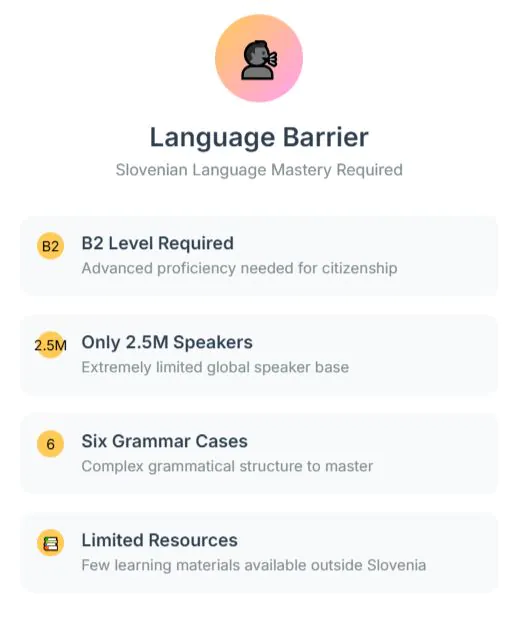
Then comes the comprehensive civic knowledge test covering Slovenian history, culture, and legal system. You must demonstrate a deep understanding of everything from medieval kingdoms to modern parliamentary procedures.
Another huge obstacle for some is that most applicants are required to renounce their original citizenship entirely – no dual nationality allowed.
Slovenia essentially wants you to become completely Slovenian, making it the hardest EU passport to obtain without investment.

And by the way, I am not saying that this is wrong – every country has its reasons to have harsh or loose requirements. I am an expat consultant, not a political commentator, and I am not here to judge immigration policies, but to help you with them.
So, if Slovenia seems tough, there is a Baltic country that rivals its requirements.
26th – Estonia (Good luck learning Estonian!)
Estonia might be famous for digital nomad visas, but getting actual citizenship here is a different story entirely. Despite being tech-forward, Estonia maintains some of the most traditional and demanding citizenship requirements in the EU.
You need 8 years of legal residence, with the last 5 years on a permanent basis. Then comes the Estonian language proficiency examination, which gets waived only if you completed your education in Estonian within Estonia itself.
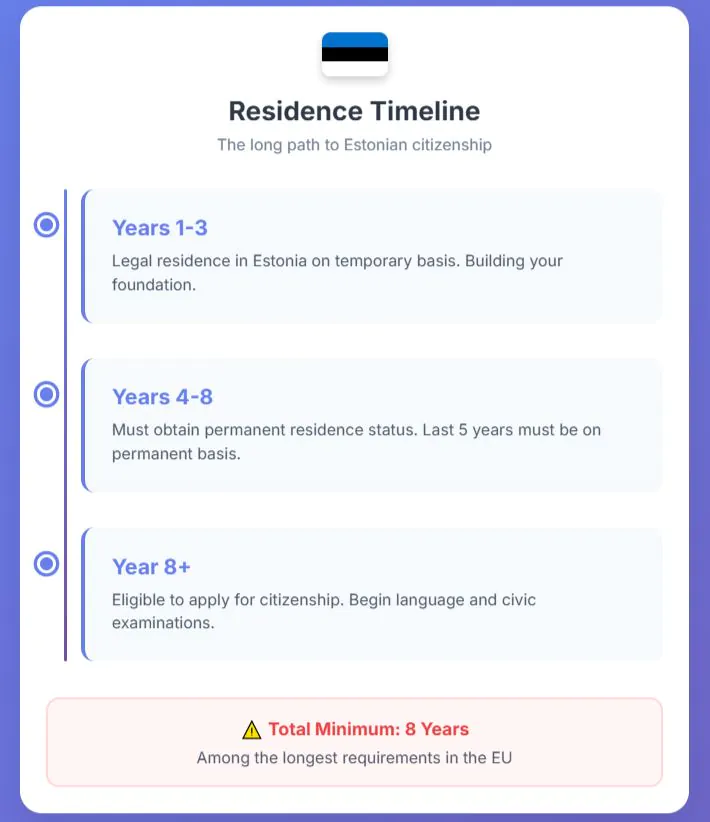
Estonian belongs to the Finno-Ugric language family, making it completely unrelated to most European languages and extremely challenging for Western speakers. Think Finnish complexity but with fewer learning resources available globally. You must also pass an examination covering the Estonian Constitution and Citizenship Act, demonstrating deep knowledge of legal frameworks and civic responsibilities.
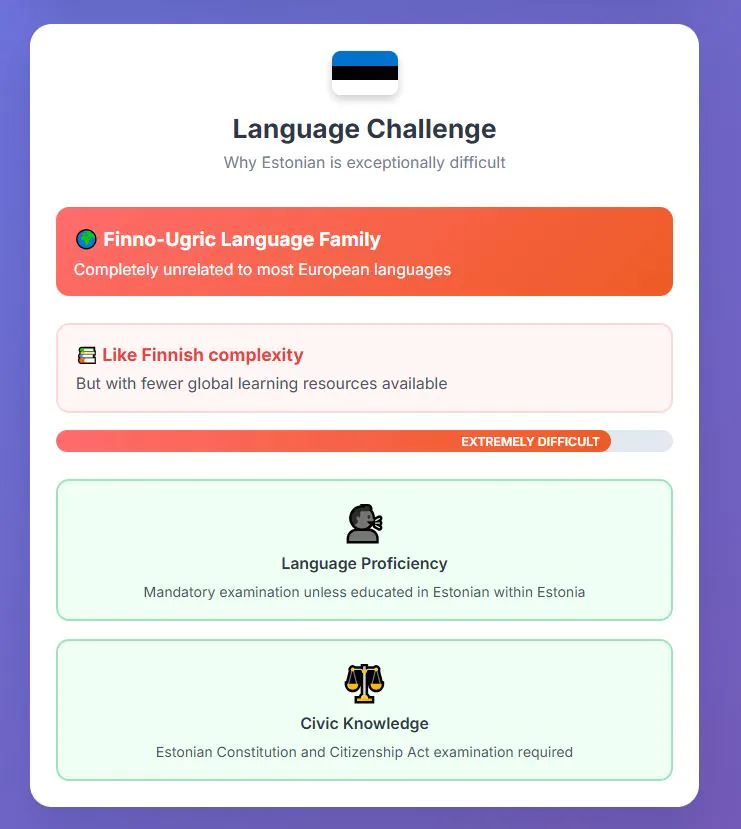
I asked an Estonian why the citizenship requirements are so harsh, and he told me this prevents “social division,” given the country’s large Russian-speaking minority population.
That is also one of the reasons that Estonia generally demands that applicants renounce their original citizenship and have loyalty only to Estonia.
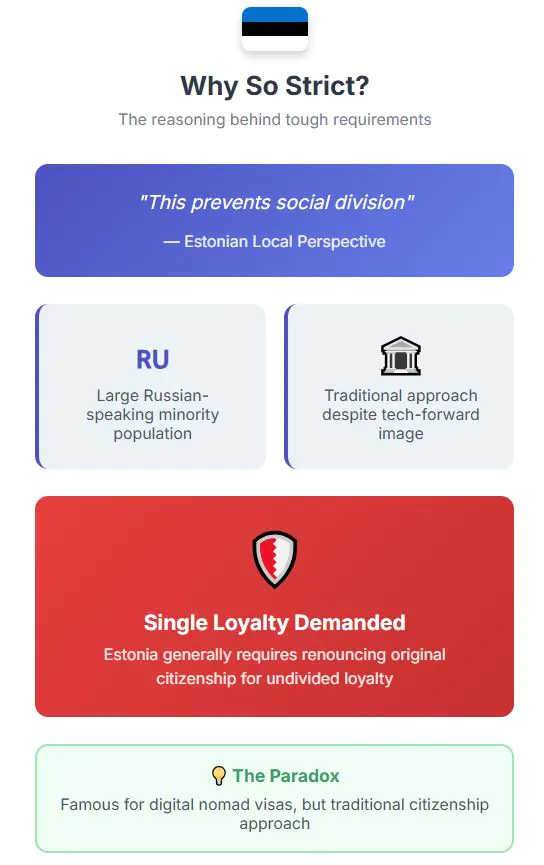
25th – Slovakia
Slovakia appears in our research as one of the most challenging paths, with requirements that eliminate most casual applicants.
The 8 years of continuous permanent residence is not among the highest, but the language requirement is where most people fail.
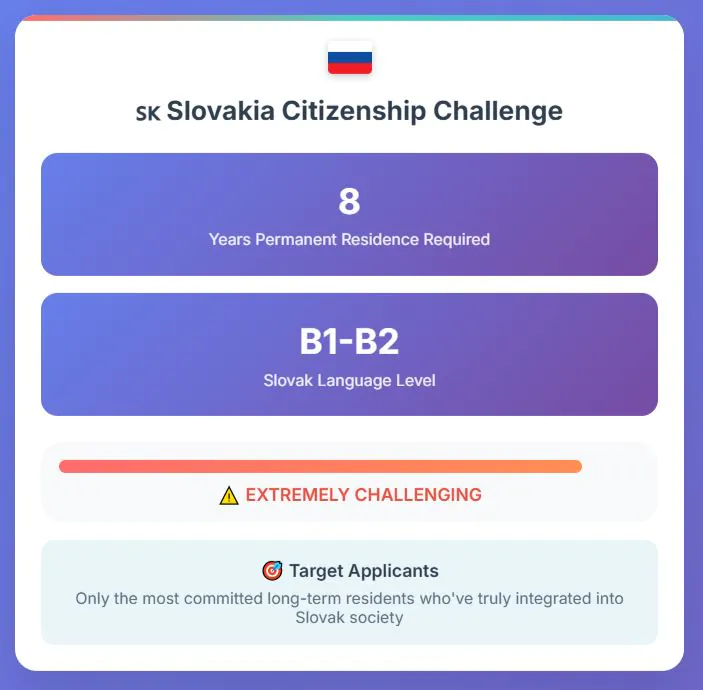
You need B1-B2 Slovak language proficiency, assessed through a demanding interview process that tests not just language but cultural understanding.
The interview covers Slovak history, geography, and socio-political development. Then comes the real test – you must read aloud a randomly selected Slovak-language press article of at least 500 words, then write a summary from memory after 30 minutes.
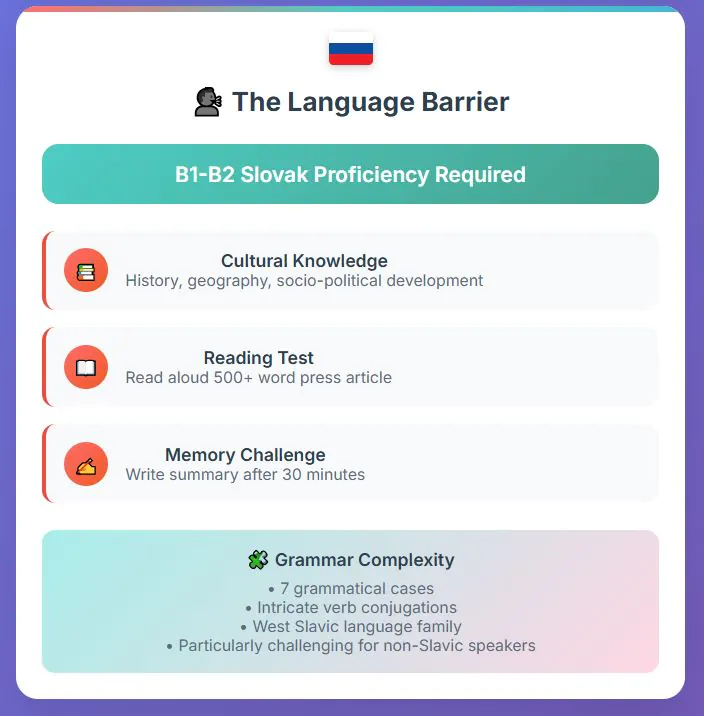
Slovak’s complex grammar system with seven cases and intricate verb conjugations creates a significant barrier for most applicants. The language belongs to the West Slavic family, making it particularly challenging for non-Slavic speakers.
Even after meeting all requirements, the Ministry of Interior retains discretionary authority to reject applications, introducing uncertainty into the process.
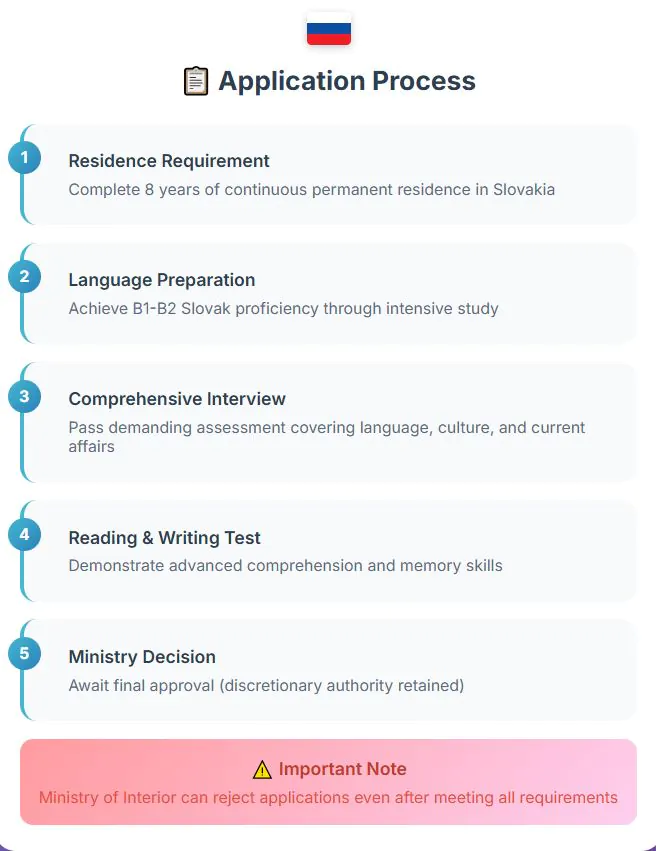
Slovakia’s approach effectively filters for only the most committed long-term residents who’ve truly integrated into Slovak society.
Our next Baltic nation takes a slightly different approach but remains equally challenging.
24th – Lithuania
For Lithuanian citizenship, you need 10 years of legal and permanent residence, which drops to 7 years if you’re married to a Lithuanian citizen.
Then comes the Lithuanian language, which creates an unexpected obstacle for most Europeans.
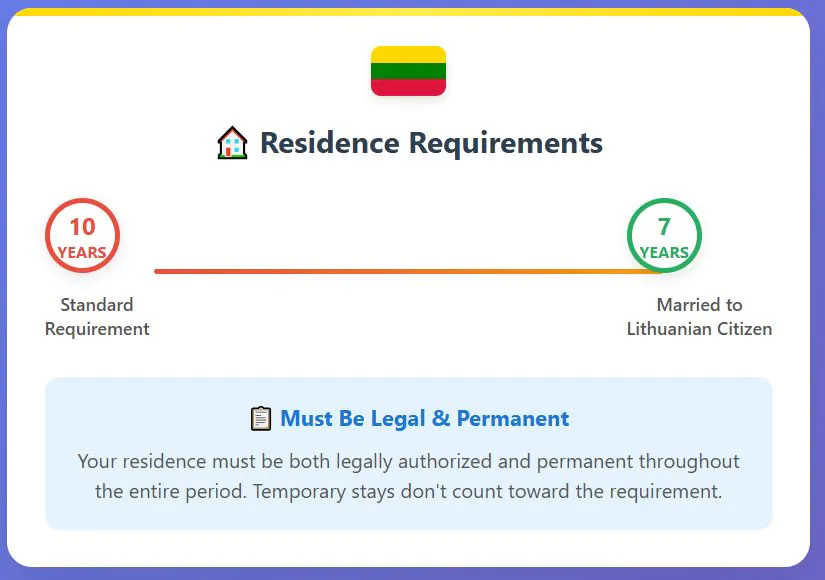
Lithuanian is one of the oldest Indo-European languages with extremely complex grammar and a limited global presence. The archaic features and distinct linguistic structure make it particularly challenging for speakers of other language families.
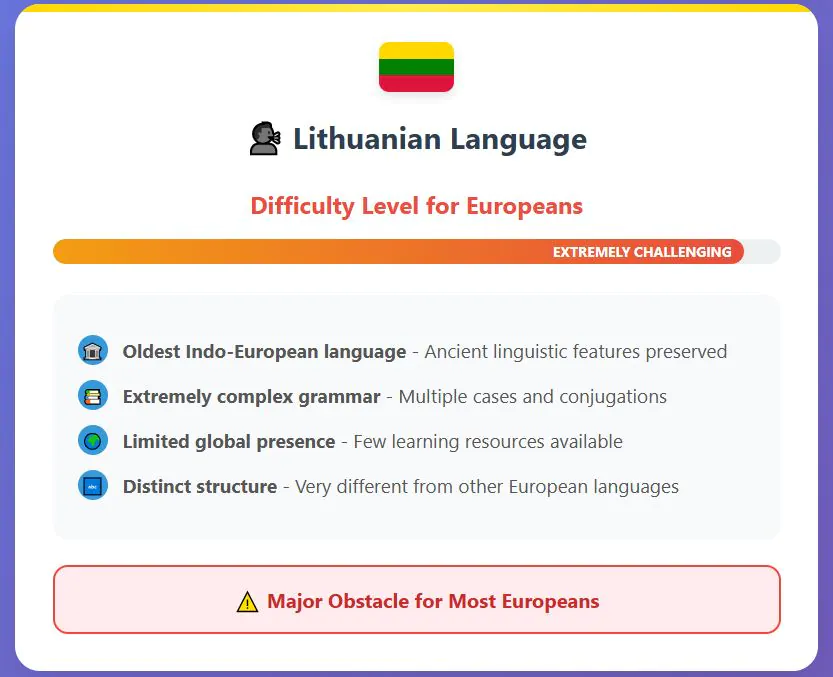
After that, you need to pass a constitutional knowledge test covering the basics of Lithuania’s Constitution, governance, and societal norms. Lithuania provides exemptions for those aged 65 or older and individuals with certain work incapacities, but most applicants face the full requirements.

Lithuania generally requires renouncing your previous citizenship; they want citizens who are truly committed just to the Lithuanian identity.
23rd – Denmark
Denmark has one of the most unusual citizenship processes in the EU – your application must literally be approved by Parliament.
The B2 Danish language requirement is just the entry ticket to a process where politicians vote on your citizenship application.
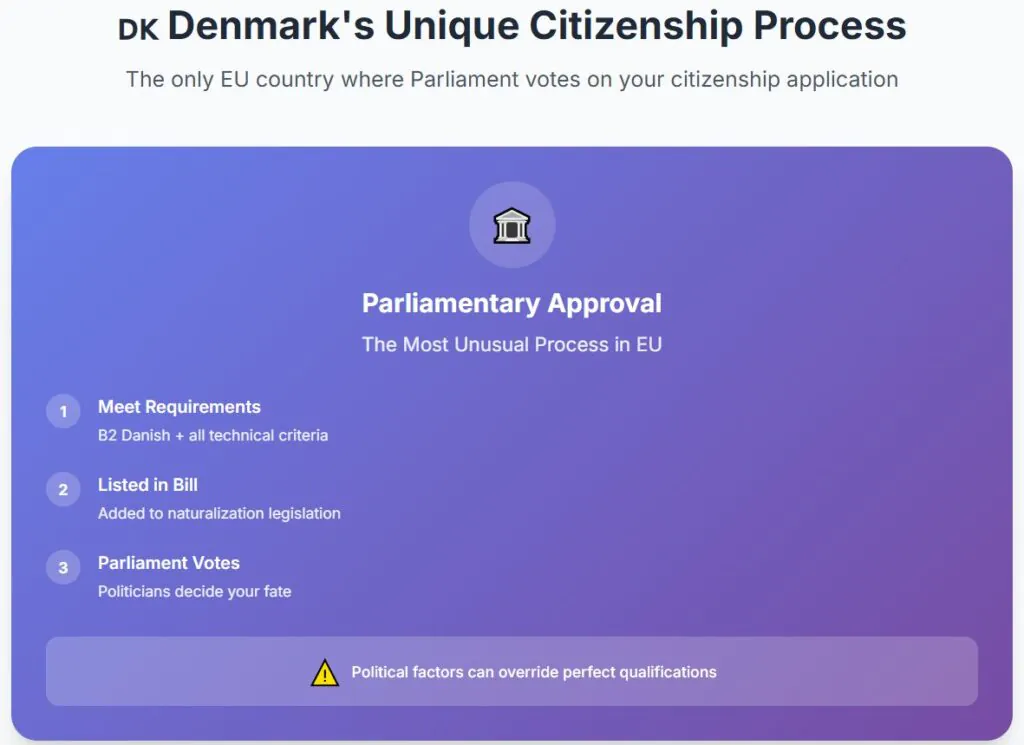
Here’s how it works: even after you meet all technical requirements, you must be listed in a naturalization bill that gets passed by the Danish Parliament. Politicians actually vote on whether you become a citizen. This means your citizenship depends on political considerations, not just administrative criteria like other EU countries.

The general residence requirement is 9 years for permanent residence holders, but Nordic citizens only need 2 years. You also need to demonstrate general knowledge of Denmark and declare allegiance to the country.
Denmark does allow dual citizenship, which helps. But the parliamentary approval system creates uncertainty and can extend processing times significantly. You could meet every single requirement perfectly and still face rejection based on political factors.
Our next country takes a more traditional approach but maintains high standards.
22nd – Poland
The rules in Poland have many exceptions and variations, but in general, you will need close to a decade for naturalization.
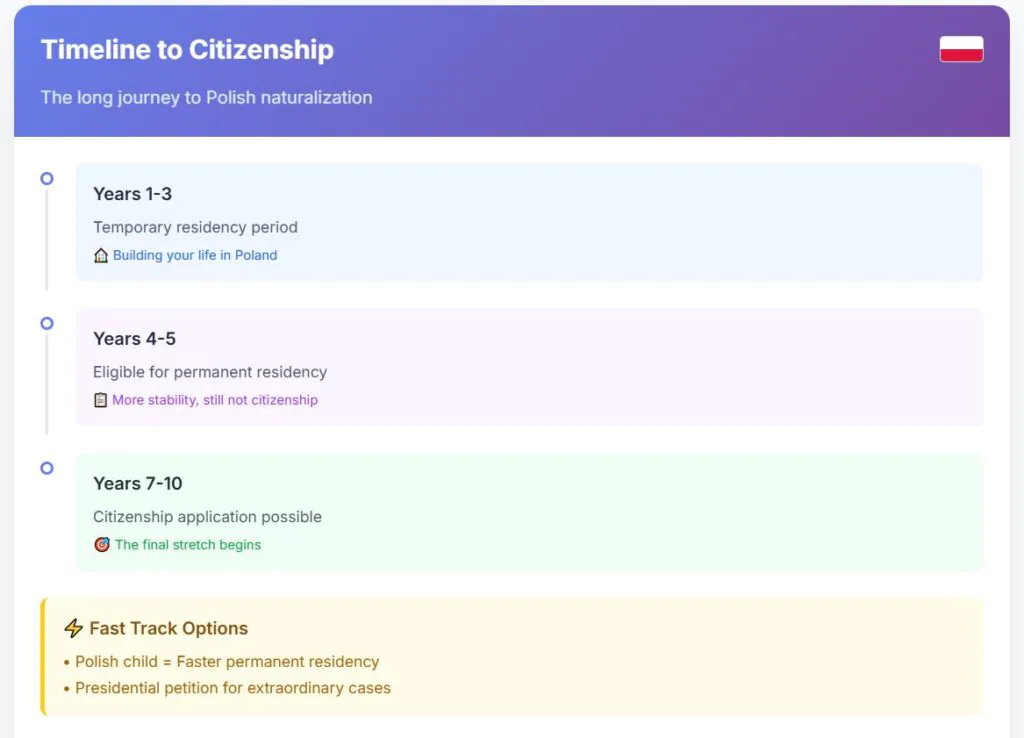
Unless you have Polish ancestors, then it is much faster… BUT, today I am ranking the hardest to easiest countries to obtain citizenship by time of residence, not by ancestry – if you would like me to write another article ranking the countries by ease to obtain citizenship by ancestry, let me know in the comment section.
I have lived in Poland for almost 8 years, and I am still not a citizen. PS: Many people overlook the pathway of citizenship by descent in Europe, which can significantly ease the process for those eligible.
Of course, this process can be shortened if you make a Polish child already in your first year here (accelerating the path to permanent residency and then to citizenship), or if you do something extraordinary and write a petition to the president, but in general, you will need between 7 to 10 years of total residency (temporary plus permanent).
But even after 10 years, you’ll face a comprehensive evaluation that goes beyond basic language skills.
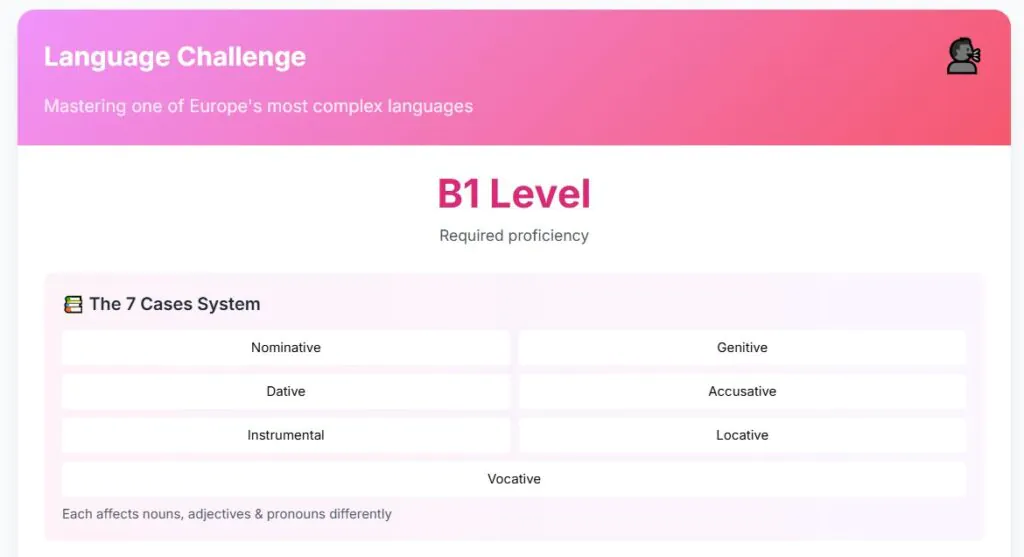
You need B1 Polish language proficiency, which means mastering one of Europe’s most complex grammatical systems. Polish uses seven cases that affect nouns, adjectives, and pronouns differently. The pronunciation includes sounds that don’t exist in most other languages, making it particularly challenging for non-Slavic speakers.

Poland’s citizenship process emphasizes cultural integration and understanding of Polish history and traditions. While there’s no separate civic test, authorities expect you to demonstrate genuine integration into Polish society through your language skills and cultural knowledge.
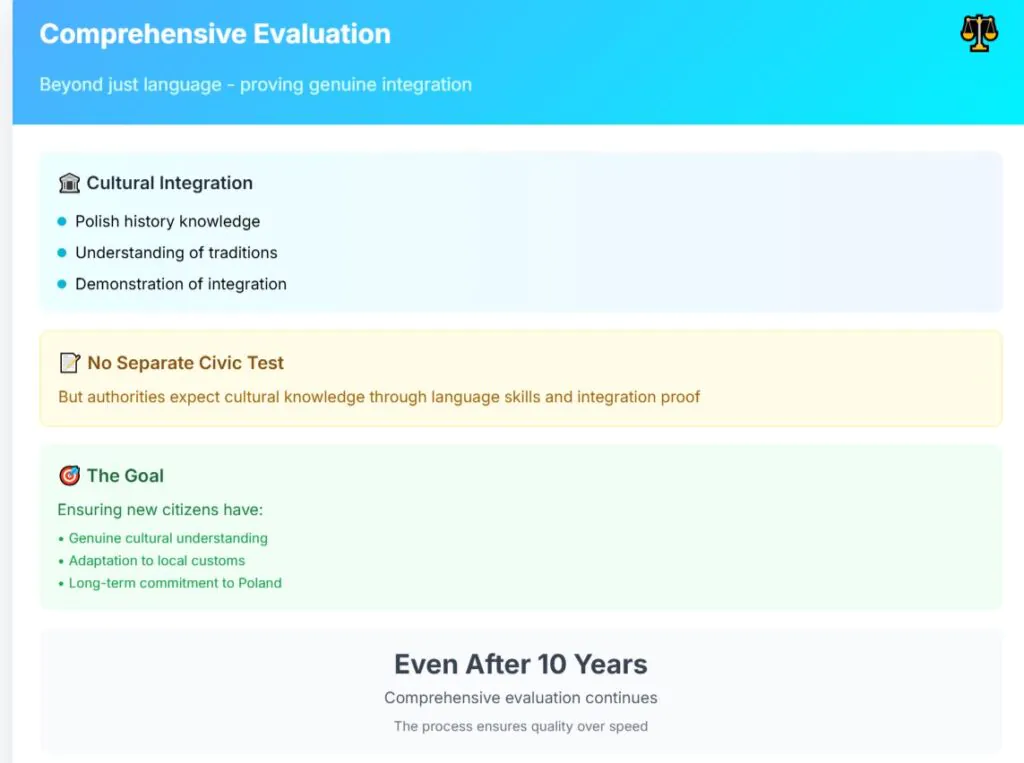
21 – Bulgaria
Bulgaria offers EU citizenship at a lower cost of living, but the path there involves navigating complex bureaucratic requirements.
The residence requirements seem straightforward until you encounter the Bulgarian administrative system and language demands.
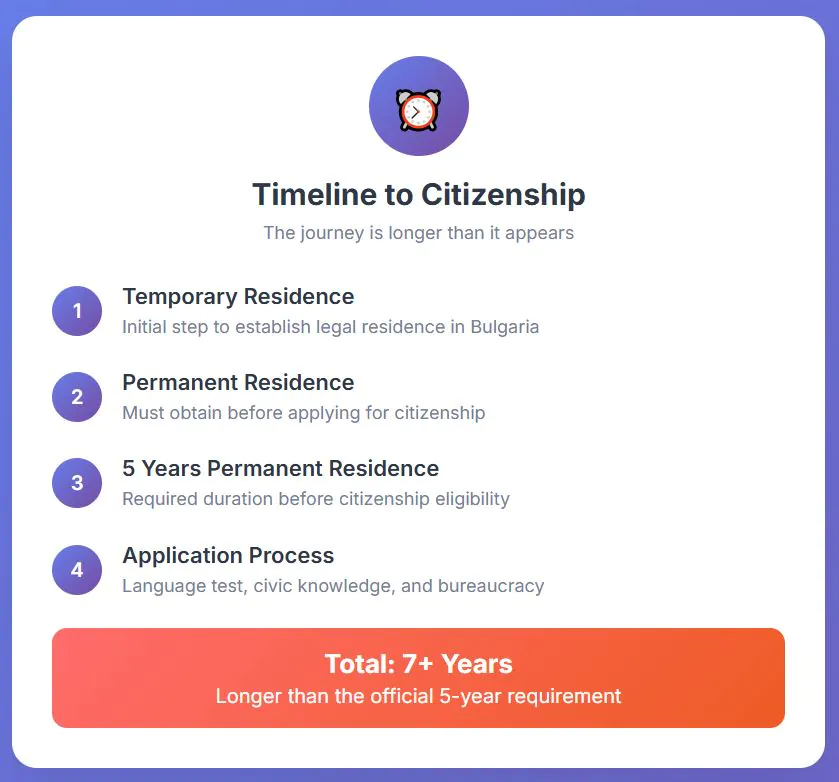
You need 5 years of permanent residence, but getting permanent residence first requires temporary residence, extending your total timeline to probably 7 or more years.
The Bulgarian language requirement uses Cyrillic script, which presents a significant learning challenge for those accustomed to the Latin alphabet. You must demonstrate “sufficient proficiency” in speaking, reading, and writing Bulgarian, assessed through an interview conducted in Bulgarian.
The subjective nature of this language assessment introduces uncertainty since it’s not based on standardized criteria. You’ll also face a civic knowledge test during your interview, covering Bulgarian history and constitution, plus demonstrate your motives for seeking citizenship.
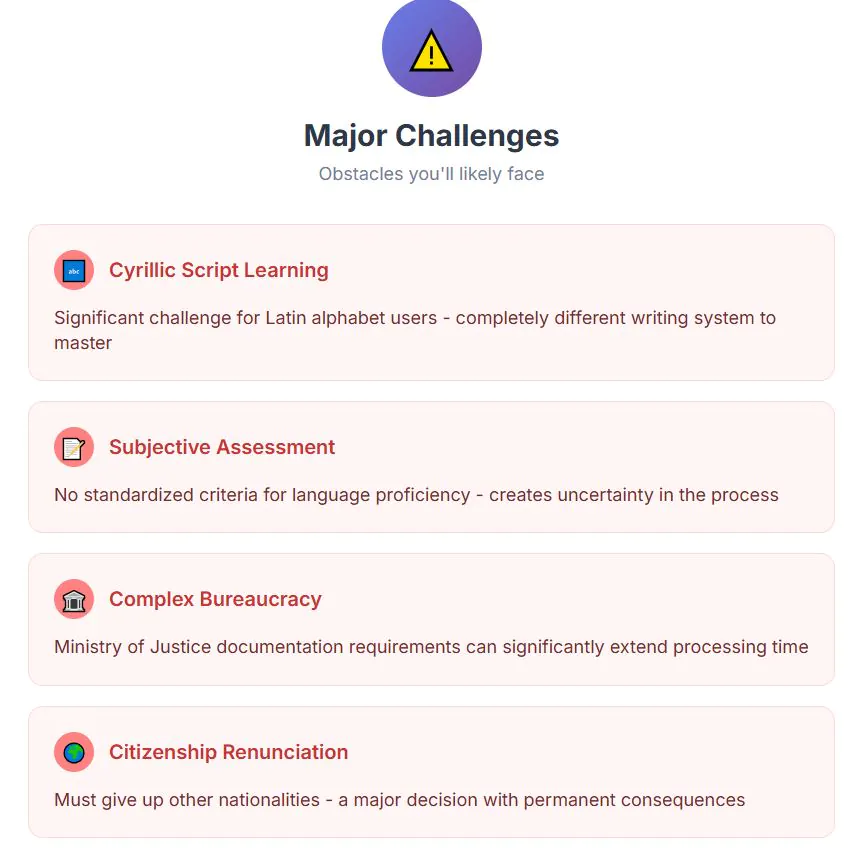
The bureaucratic challenges and documentation requirements managed by the Ministry of Justice can extend the process significantly. Bulgaria generally requires renouncing all other nationalities, adding another barrier.
20th – Austria
In Austria, the 10-year residence requirement is just the beginning.
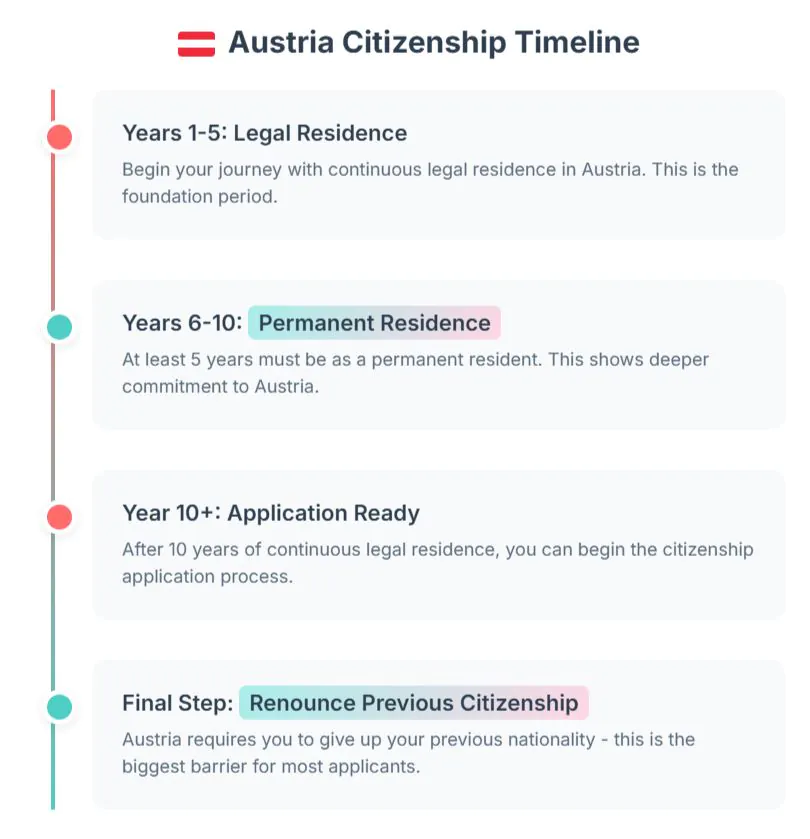
Austria is one of the few Western European countries that generally requires you to renounce your previous citizenship.
You also need 10 years of continuous legal residence, but at least 5 of those years must be as a permanent resident.
You must demonstrate German language proficiency and pass a comprehensive civic test covering Austrian history, culture, and legal system. You also need to prove “irreproachable integrity” and sufficient financial resources.
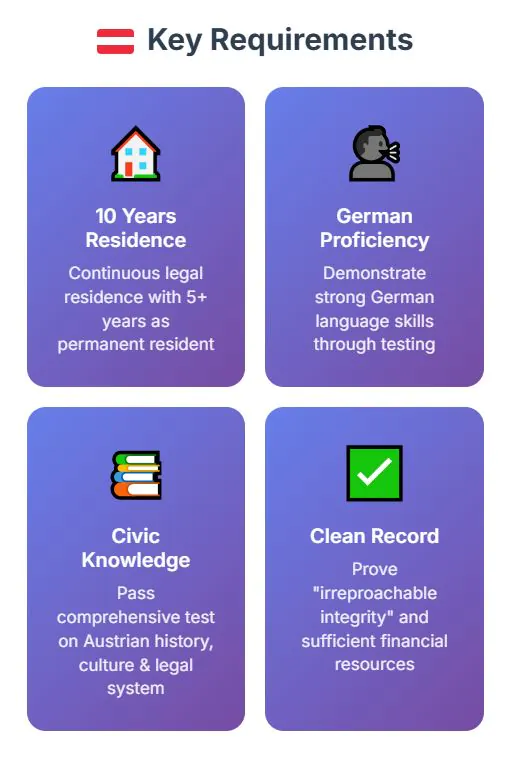
Austria’s strict approach to dual citizenship creates the biggest barrier.
Unlike Germany, which now allows dual nationality, Austria demands you to choose. Limited exceptions exist for those married to Austrian citizens or deemed “exceptionally integrated.”
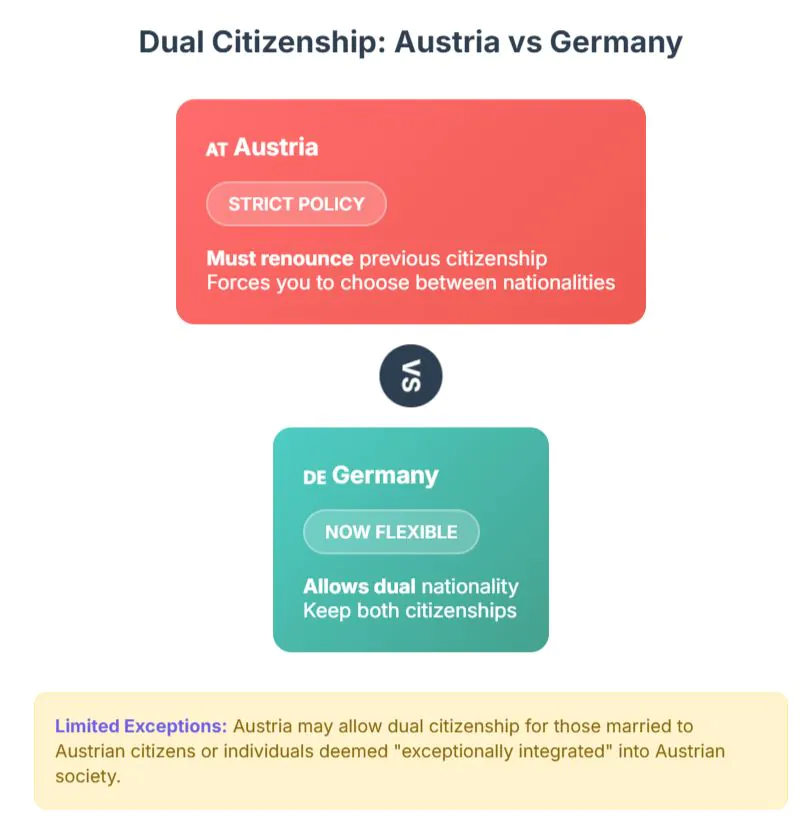
19th – Greece
Greece offers EU citizenship after 7 years of residence in the country, but the language requirement creates an extra barrier.
B2 Greek proficiency means mastering not just a different alphabet, but one of Europe’s most complex grammatical systems.
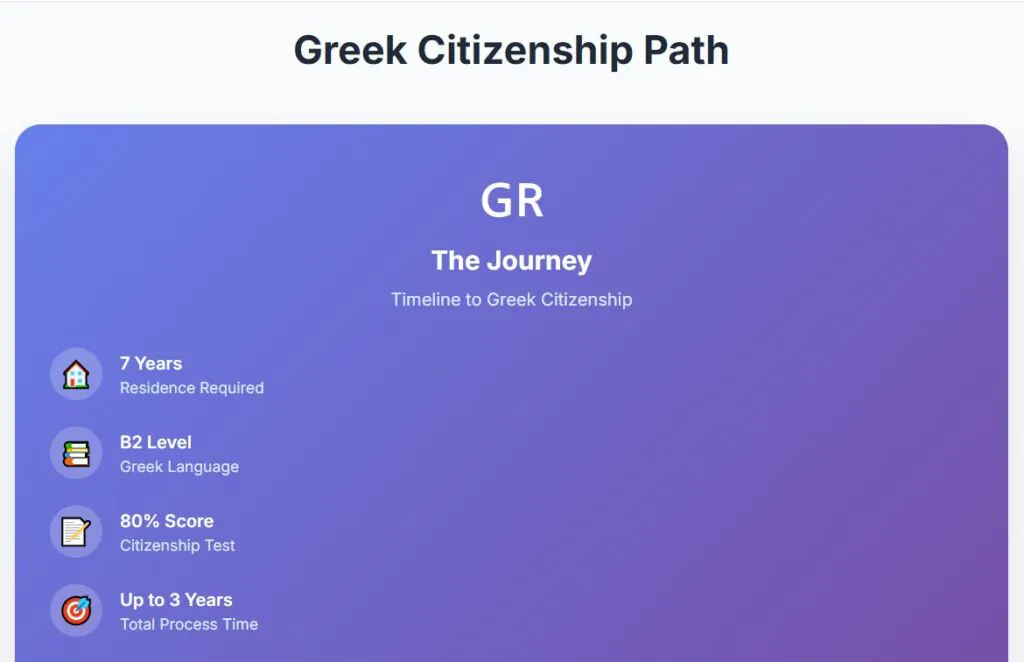
The Greek alphabet presents an immediate challenge since you must learn entirely new characters before even starting with vocabulary. The language’s complex verb conjugations and sentence structures demand considerable time and effort to master. Unlike widely spoken languages, Greek learning resources are limited and less accessible than materials for English, French, or Spanish.
You must pass a comprehensive citizenship test consisting of 20 multiple-choice questions covering Greek history, culture, geography, and government. You need an 80% score to pass. After the written exam, you face an interview with Ministry representatives who evaluate your Greek communication skills and cultural understanding.
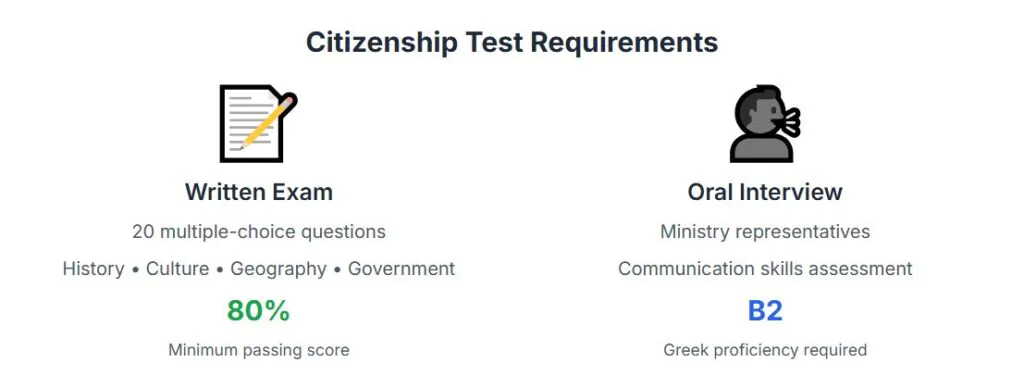
The entire process for Greek citizenship can take up to three years.
But it might be worth it if you dislike paying high taxes, because Greece has one of the lowest income taxes for expats in Europe, and the best cuisine too, but that is just my opinion.
Also, some might be surprised to see Greece among the hardest countries to obtain citizenship, since to gain residence by investment there is relatively easy.
18th – Latvia
Latvia completes the Baltic challenge with requirements that reflect their strong linguistic identity.
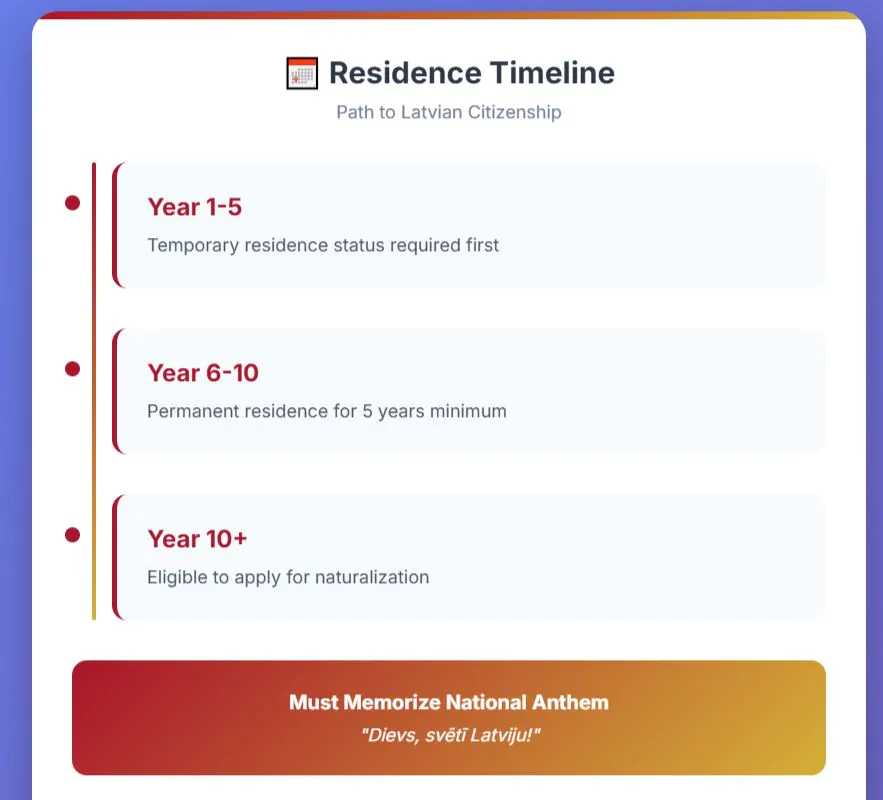
Latvian language requirements are particularly strict given the country’s history and efforts to preserve their linguistic heritage after decades of occupation.
You need 10 years of legal residence for naturalization, including 5 years of permanent residence after obtaining temporary status first. The Latvian language proficiency test represents a significant linguistic barrier for most applicants. Like Lithuanian, Latvian belongs to the Baltic language family with distinct grammatical structures and vocabulary that require dedicated study.
The comprehensive citizenship test covers Latvian culture, history, and constitution. You must memorize the lyrics of the Latvian National Anthem “Dievs, svētī Latviju!” – demonstrating commitment to national identity. The test assesses your understanding of Latvia’s constitution and historical struggles for independence.
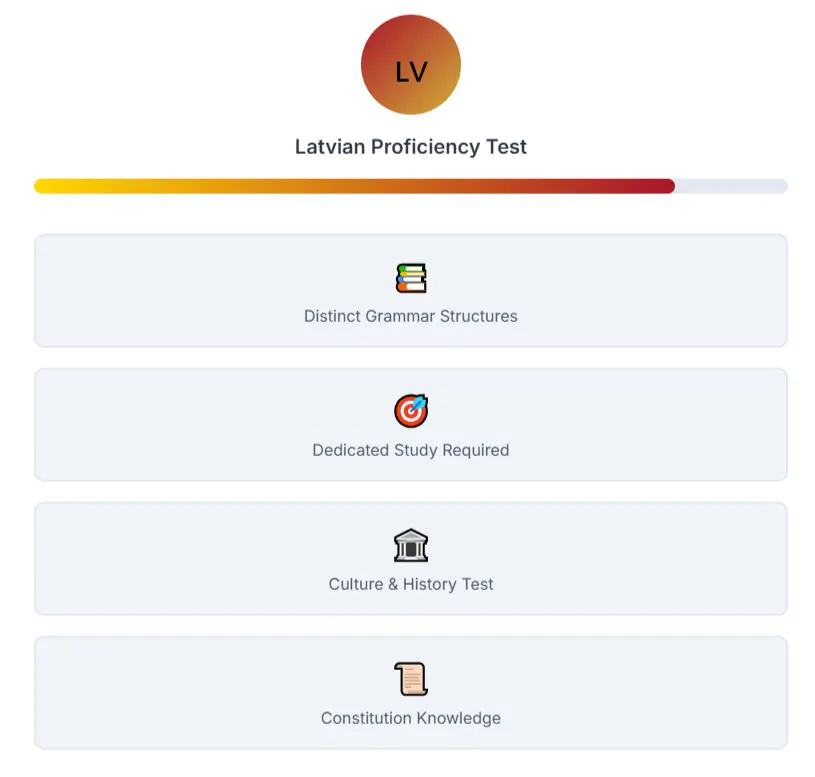
Latvia generally permits dual citizenship with EU and NATO countries, Australia, New Zealand, and Brazil.
17th – Italy
Italy is one of my favorite countries in Europe, and in Southern Italy, they have one of the most attractive tax schemes for expats in Europe.
But the path to citizenship involves navigating legendary Italian bureaucracy.
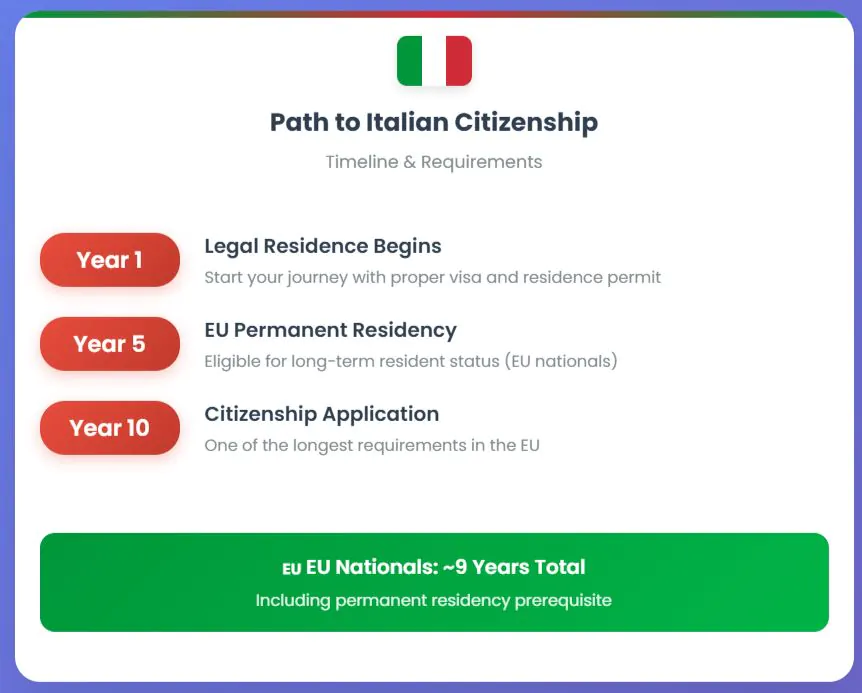
While Italian language might seem approachable, the administrative process can turn a straightforward application into a years-long odyssey.
You need 10 years of legal residence, which represents one of the longest requirements among EU countries. Even EU nationals face effectively 9 years total when you factor in the permanent residency prerequisite.
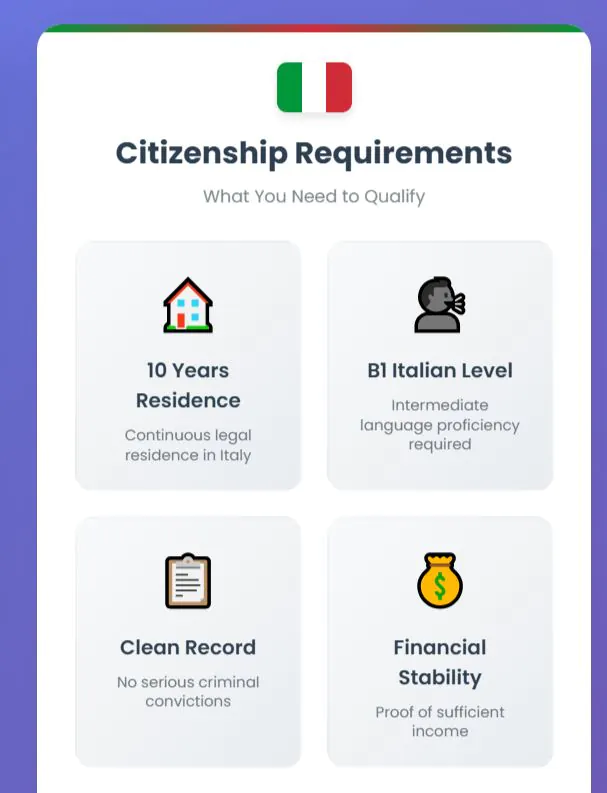
The B1 Italian language proficiency requirement became standard for all naturalization cases, requiring intermediate-level communication skills that demand dedicated study and preparation – the good news is that Italian is a quite straightforward language to learn.
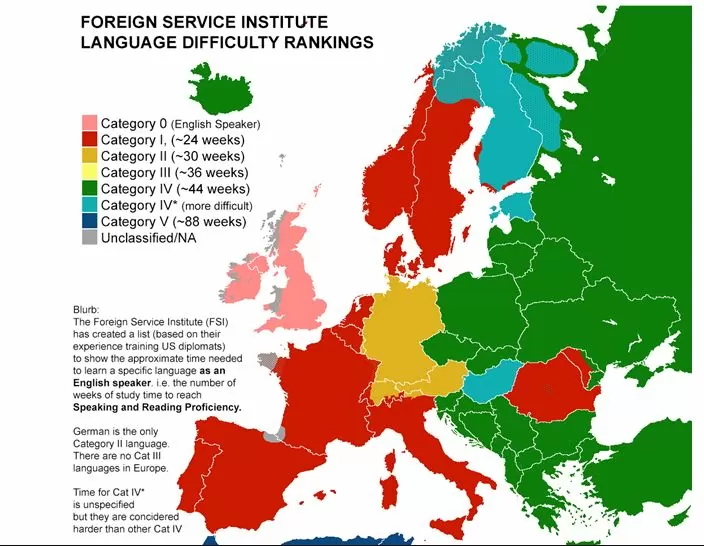
And it becomes even more straightforward with the right tools – Lingq has the secret weapon for learning Italian and other European languages that I recommend to my clients – you can try here for free, and if you decide to subscribe, you will have an awesome discount.
In Italy, the bureaucratic maze creates the real challenge. Processing times vary dramatically depending on which region handles your application. Some regions process efficiently while others experience significant backlogs. Documentation requirements include extensive paperwork with apostille certification and certified Italian translations for all foreign documents.
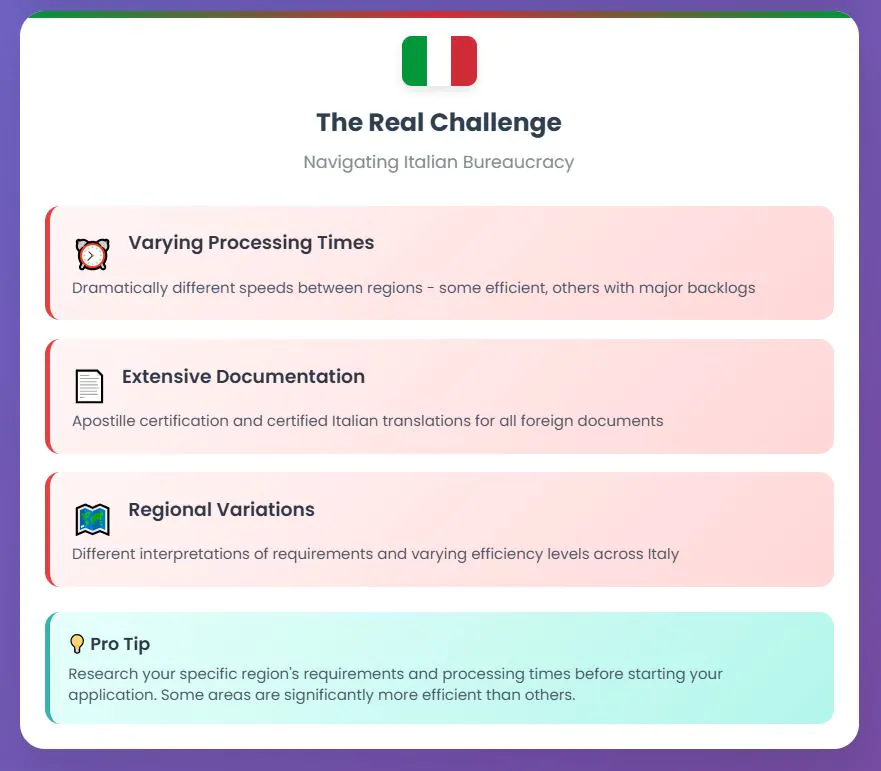
Regional variations in application handling mean different interpretations of requirements and varying efficiency levels.
16th – The Netherlands
To aquire Dutch citizenship, you need 5 years of continuous legal residence, dropping to 3 years if you’re married to a Dutch citizen and living together.
While 5 years is relatively short when compared to the some of the countries in this ranking, the Dutch requirement of passing a civic integration exam elevates difficulty.
Yes, there is a civic test, and it is the real challenge. It is called the Inburgeringsexamen – it is applied in Dutch languaged and requires knowledge of Dutch culture, history, and social norms.
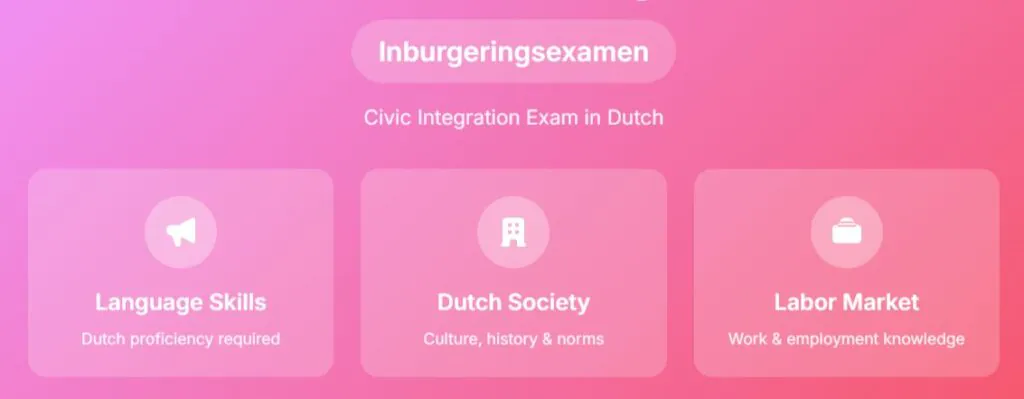
The exam covers multiple components including language skills, Dutch society knowledge, and understanding of the labor market.
The Netherlands generally requires renouncing your current nationality, though some exceptions exist. This single nationality preference creates an additional barrier for those wanting to maintain ties to their home country.
15th – Finland
Finland offers Nordic quality of life and demands 8 years of residence for citizenship, but Finnish language requirements create a unique obstacle for most Europeans. Finnish belongs to the Finno-Ugric family, making it completely unrelated to other European languages and extremely difficult to learn.
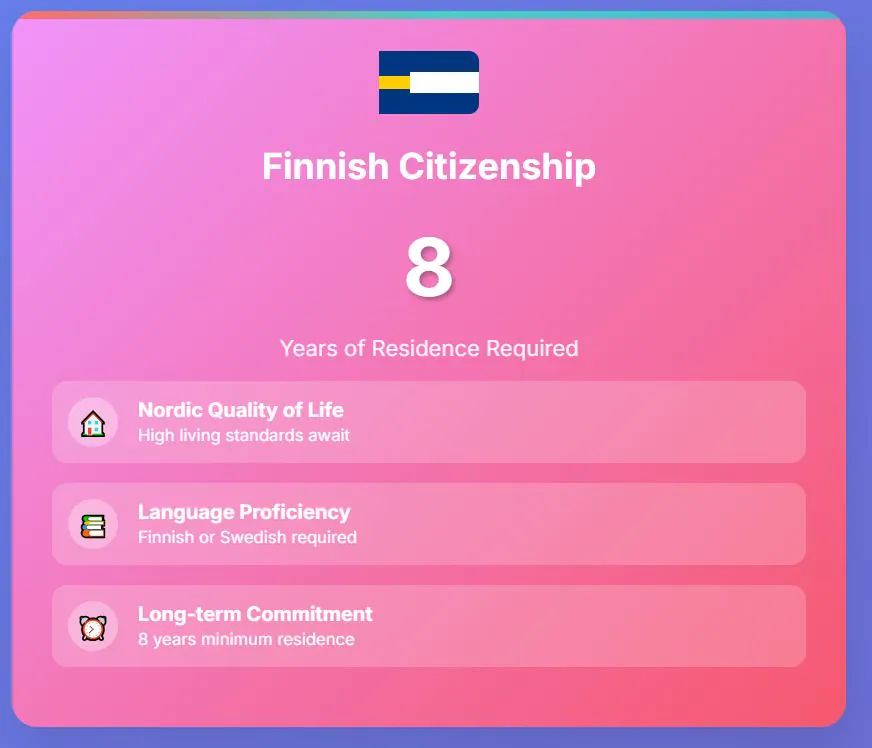
You can’t rely on cognates or familiar grammatical structures when learning Finnish. The language employs 15 grammatical cases that govern how nouns, pronouns, adjectives, and verbs change form depending on their function in sentences. This creates a steep learning curve for anyone accustomed to simpler grammatical structures.
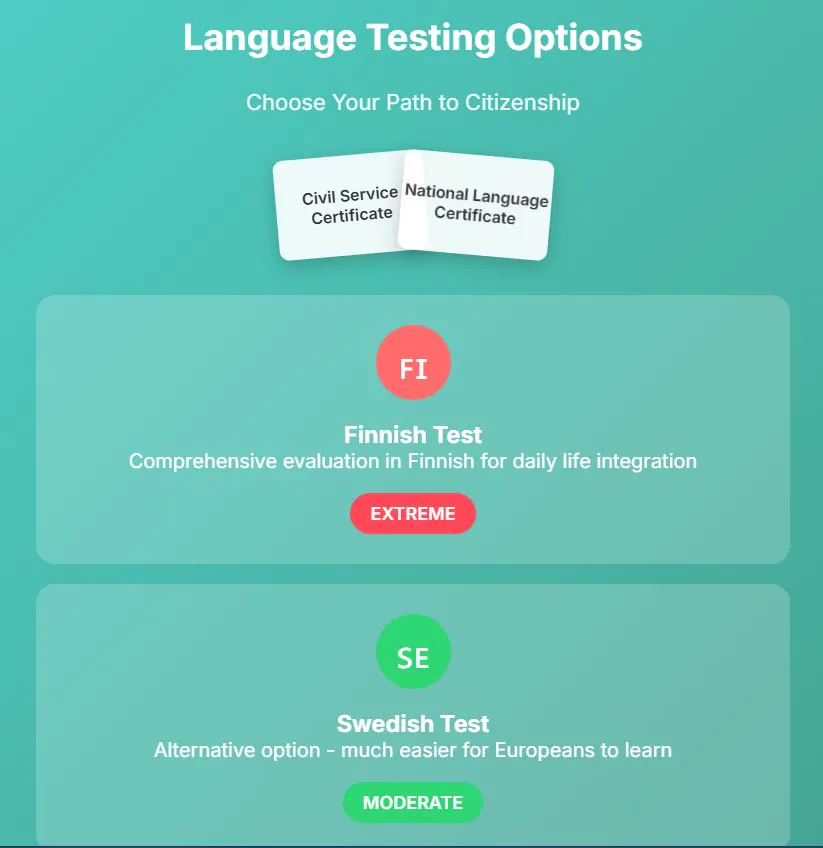
You must demonstrate proficiency through the Civil Service Language Proficiency Certificate or the National Certificate of Language Proficiency test. These comprehensive evaluations assess your ability to use Finnish in different contexts for daily life integration.
But here’s some good news – you can opt for a Swedish language test instead of Finnish. While Swedish isn’t a piece of cake, it’s way easier than Finnish – Way, way, easier.
14th – Hungary
Now we are entering the realm of countries that have medium difficulty to obtain citizenship. None of the next countries I will mention demand you to renounce your citizenship, and most of them require less than 10 years of residence.
The first on this medium-difficulty tier is Hungary, in 14th place.
Hungary’s unique position in Central Europe comes with citizenship requirements that reflect their distinct cultural identity. Hungarian language, another Finno-Ugric language, presents similar challenges to Finnish but with different cultural integration requirements. Additionally, for expatriates considering a long-term stay, understanding the citizenship process is crucial, especially regarding retirement benefits in Hungary. The country offers an appealing lifestyle and affordable cost of living, making it an attractive destination for retirees. However, navigating the complexities of language and local customs is essential for successful integration into Hungarian society.
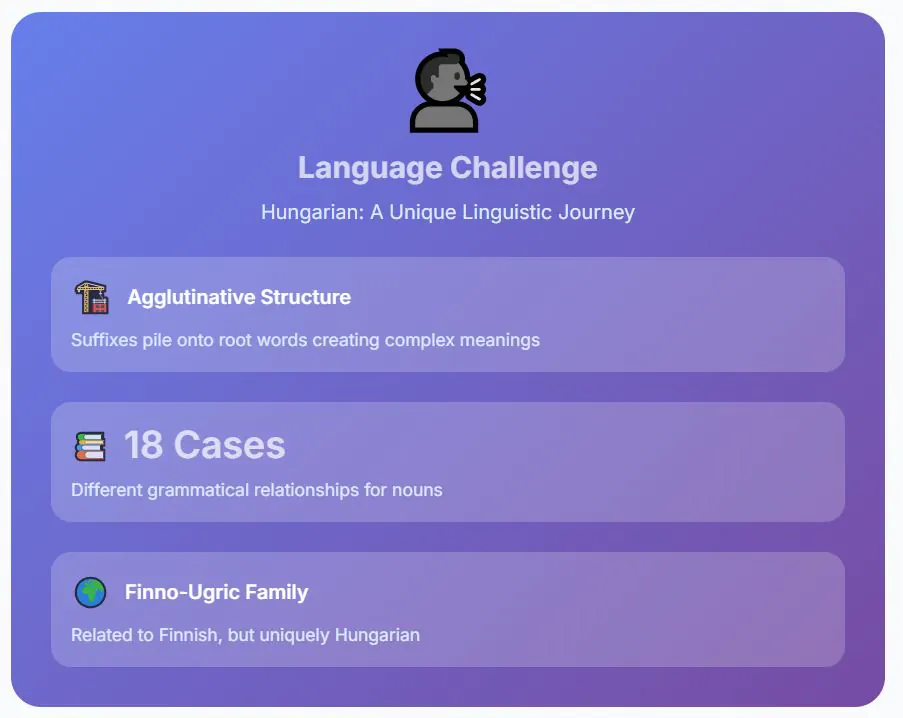
Hungarian grammar uses an agglutinative structure, where suffixes get added to root words to indicate grammatical functions like tense, case, and possession. This creates long and complex words as multiple suffixes pile onto the root. The language has 18 different cases that indicate relationships between nouns and other words – covering location, direction, and possession.
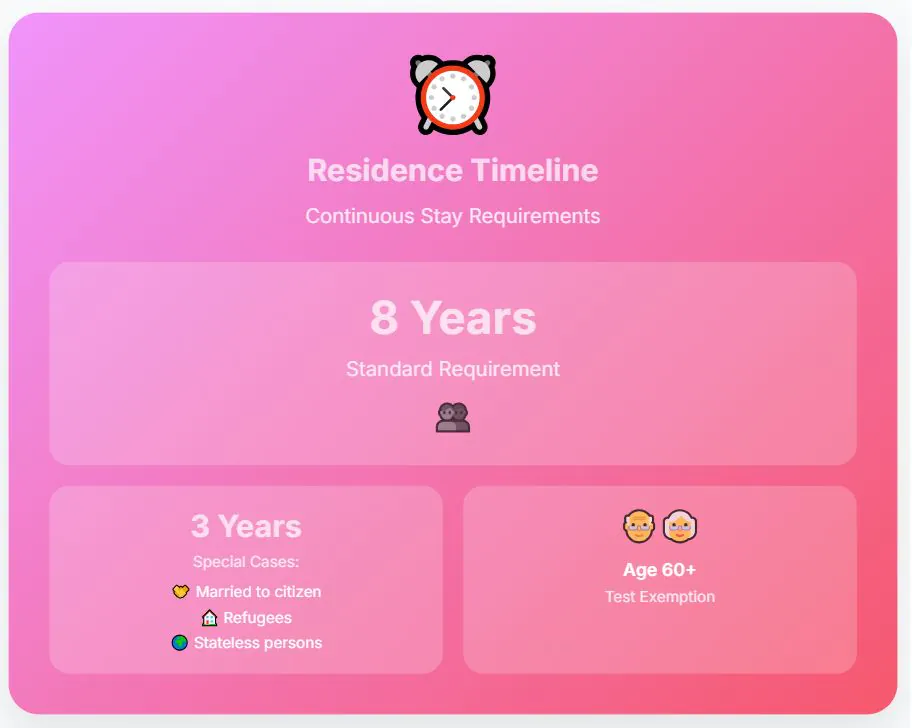
You need 8 years of continuous residence for naturalization, though this drops to 3 years for recognized refugees, stateless persons, or those married to Hungarian citizens. Applicants over 60 years old get exempted from the the test.
13th – Romania
Romania offers EU citizenship with much lower living costs, and if you ever dreamed of becoming a farmer in an idyllic scenario, that might be a good choice.
To obtain Romanian citizenship, you need 8 years of continuous legal residence, though this drops to 5 years if you’re married to a Romanian citizen and 4 years for recognized refugees.
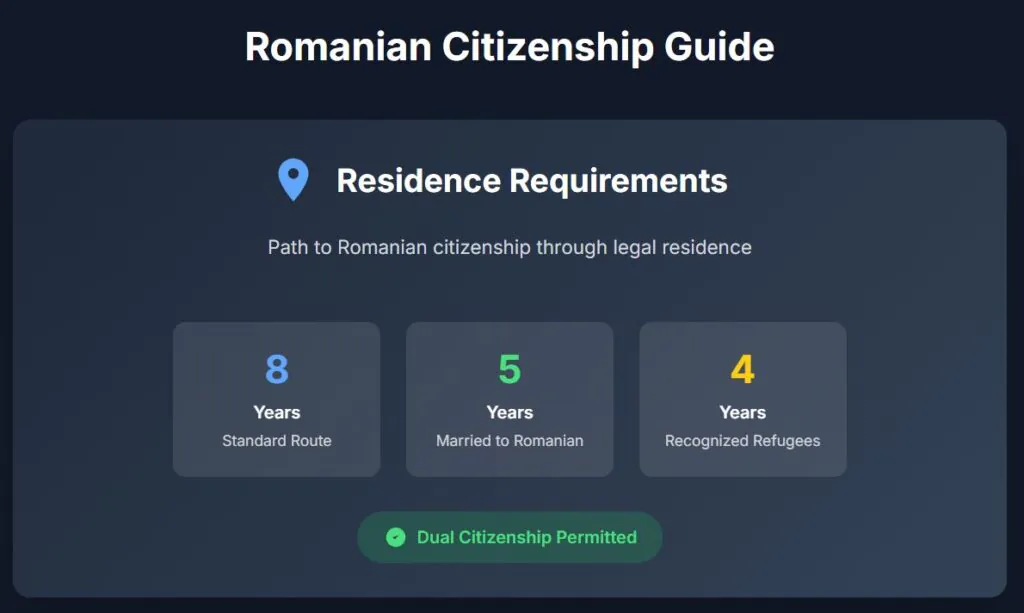
You must demonstrate proficiency in the Romanian language and possess “basic notions of Romanian culture and civilization” sufficient for social integration, assessed through an interview.
Despite the location in Eastern Europe, Romania has a Romance language.
The grammar follows familiar patterns for speakers of Spanish, Italian, or French, though it includes unique features like definite articles attached to nouns.
It is much easier than any Slavic language, but I would say (and probably Romanians will agree with me in the comment section) that it is the hardest of all romance languages, exactly due to the Slavic influences.
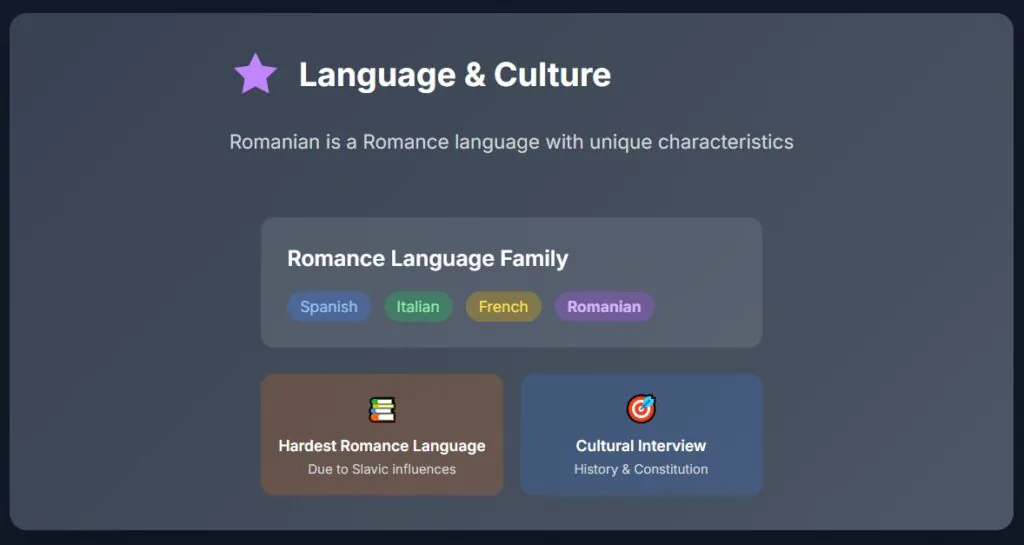
The citizenship application includes a comprehensive interview covering Romanian history, geography, culture, and the Romanian Constitution.
The country permits dual citizenship, which removes a major barrier for many applicants.
12th – Croatia
Croatia, the EU’s newest member, has developed citizenship requirements that reflect its recent EU integration experience.
You need 8 years of continuous residence plus permanent residence status. The requirement drops to 3 years if you’re married to a Croatian citizen.
Croatian language proficiency gets assessed through an approved language test, though individuals over 60 receive exemptions. You must also demonstrate knowledge of Croatian culture and social structure through a cultural questionnaire administered by a police official, covering basic constitutional knowledge and social integration.
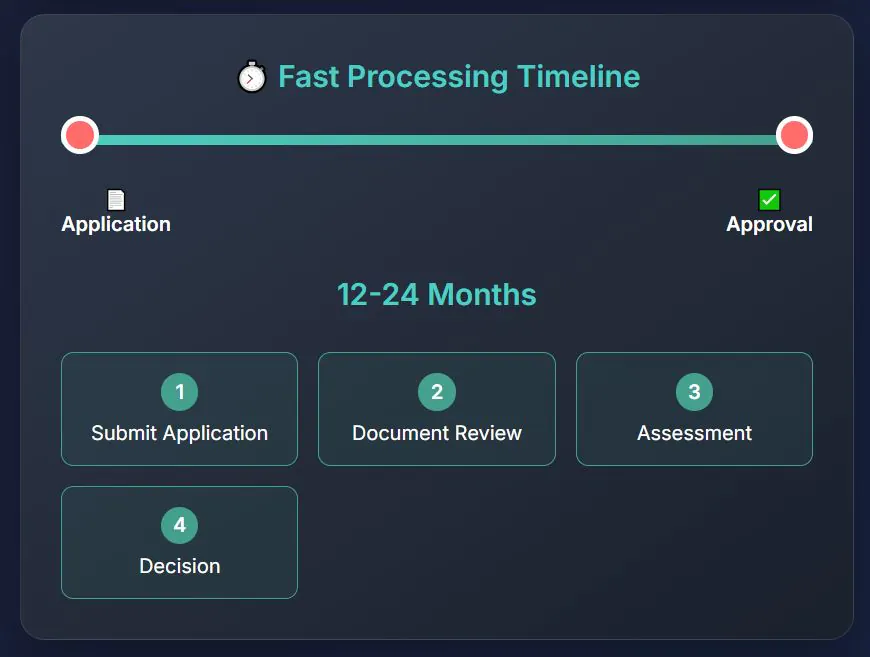
The naturalization process takes between 12 and 24 months from application submission, a relatively fast processing time.
11th – Czechia
For Czech Citizenship, you need 5 years of continuous residence with permanent residency status, though close family members of EU citizens only need 2 years.
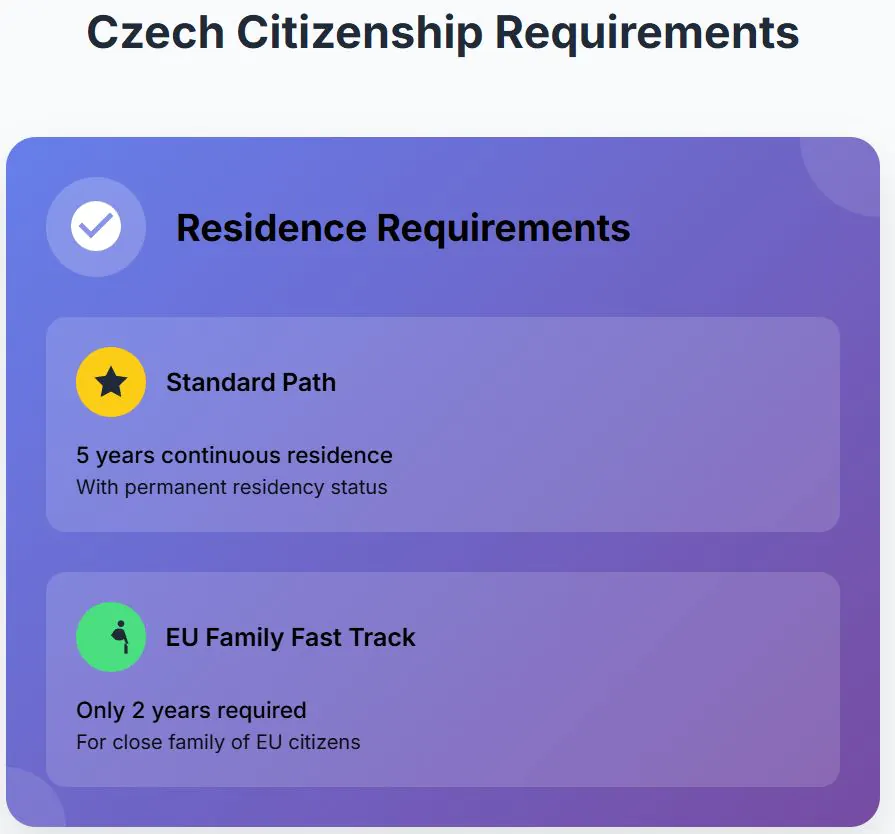
B1 Czech language proficiency is mandatory. Czech belongs to the West Slavic language family with seven grammatical cases that affect how nouns and adjectives change based on their sentence function.
As a Polish speaker, I find Czech remarkably similar – it is like Polish but with some weird sounds.
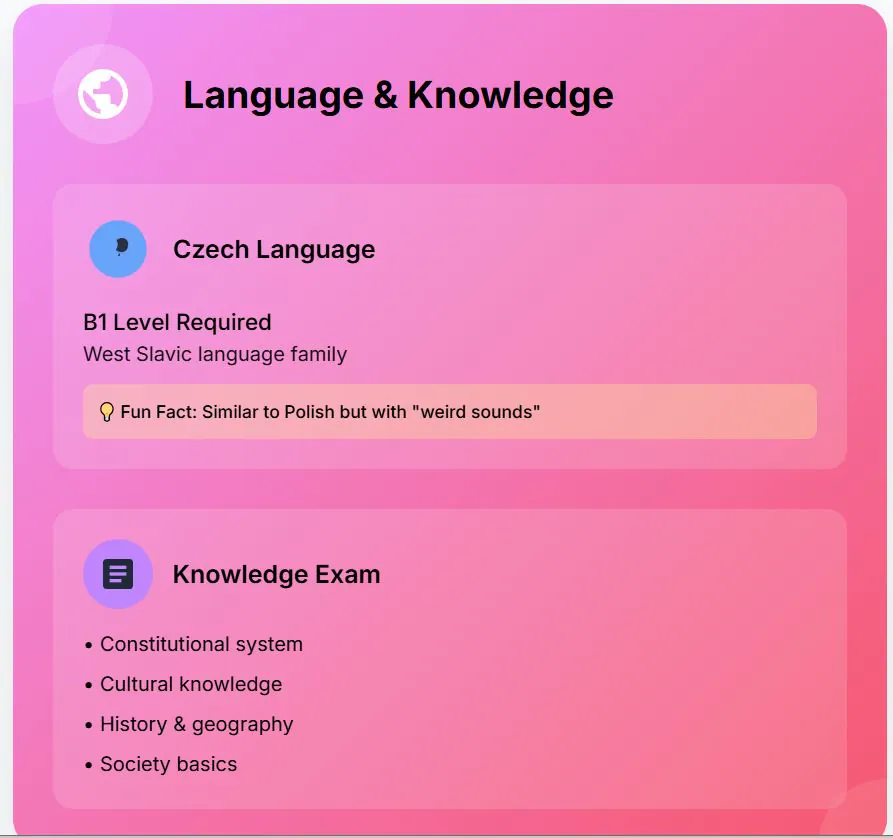
You must pass an exam covering the Czech constitutional system plus cultural, historical, geographical, and societal knowledge.
You also need to show three years of clean legal record and proof of income.
Czechia permits dual citizenship and processes applications systematically. The country balances accessibility with genuine integration requirements, creating reasonable standards without unnecessary barriers.
10th – Cyprus
Starting our Top 10 of the easiest countries to obtain Citizenship by residence, Cyprus is a curious case – due to tax incentives, their citizenship is very attractive.
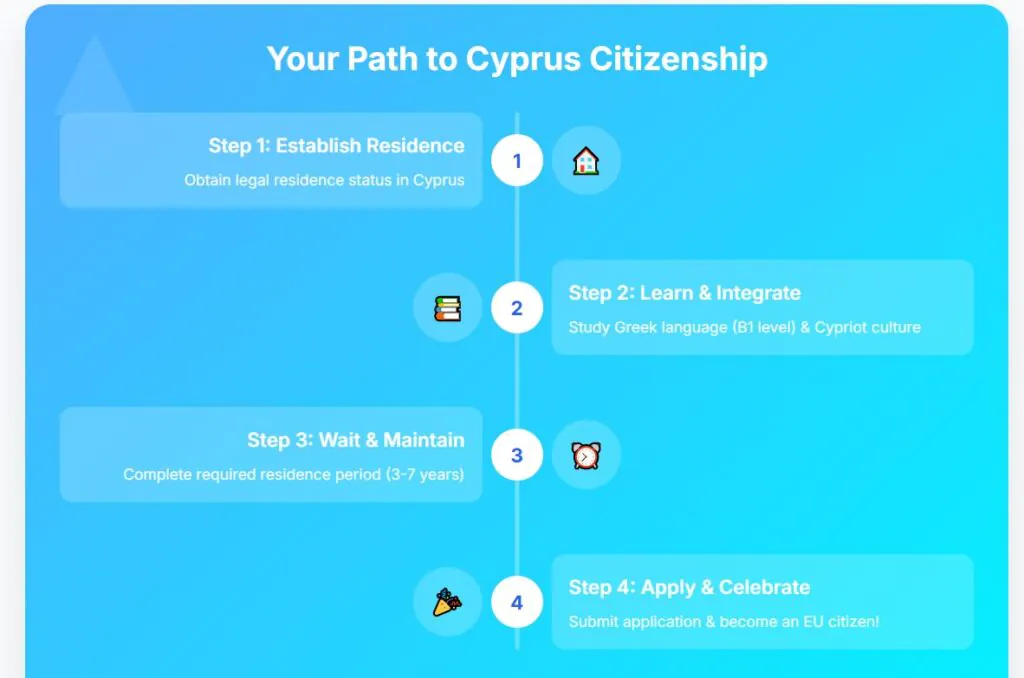
You need 7 years of legal residence, but here is where things start to get interesting: you can reduce that time if you proove fluency in Greek language!
And if you’re married to a Cypriot citizen, you only need 3 years of continuous residence.
The language requirement offers real flexibility. If you put the effort to learn Greek, and reach B1 level, you can become a citizen in just 5 years (additional requirements like a clean criminal record apply).
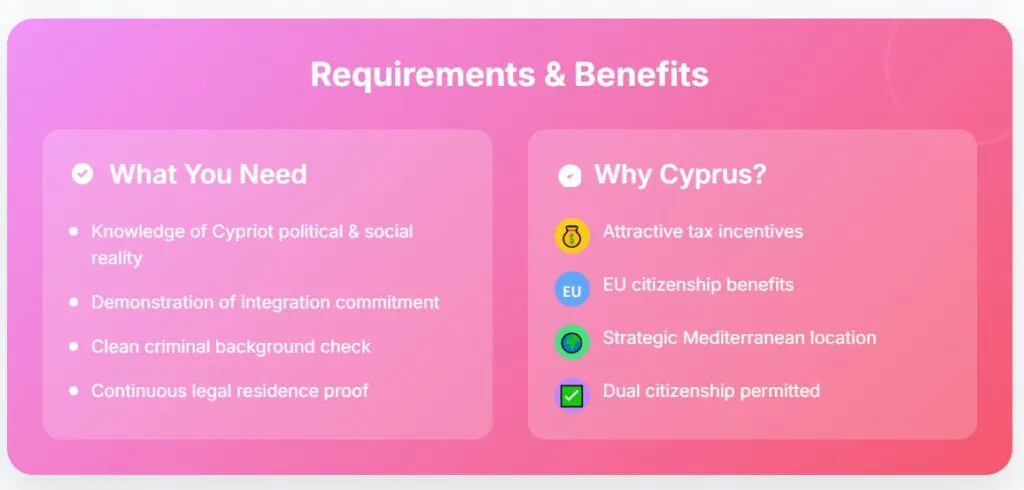
You must also show sufficient knowledge of contemporary Cypriot political and social reality, plus demonstrate commitment to integration.
Cyprus permits dual citizenship, removing a major barrier that eliminates many other EU options. The strategic location and – at the risk of sounding repetitive – the tax incentives make the country a very attractive option.
9th – France
Now we are coming for countries where to obtain citizenship is relatively accessible in a short period of time.
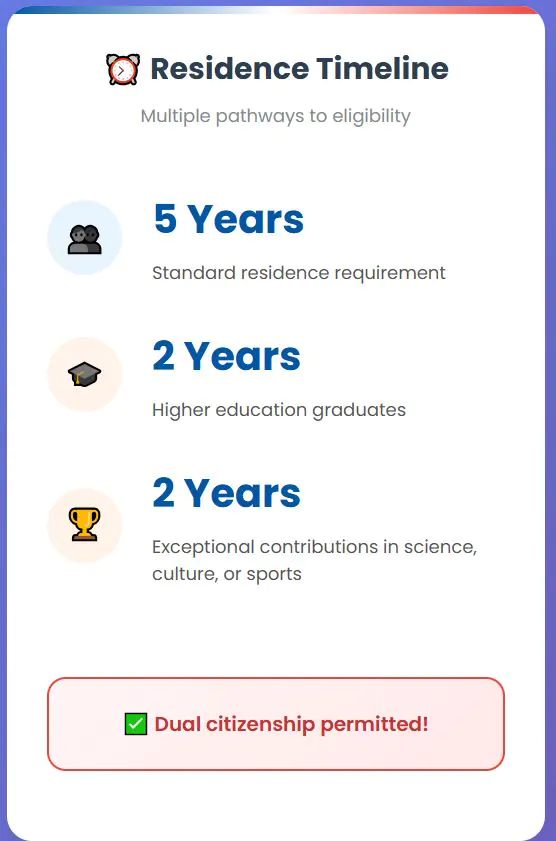
France has short requirement for residence time: just 5 years, and this drops to 2 years for those completing higher education in France or making exceptional contributions in science, culture, or sports. They also permit dual citizenship, so you don’t need to renounce your previous passport.
However…
If you ever visited France, probably you are aware that they have a dosis of zealous for their beloved language hard to find anywhere else, and the proces to obtain French citizenship reflects that.
You need B2 French proficiency in both oral and written forms. This means passing the DELF B2, DALF C1 or C2, or recent TCF or TEF certificates issued within two years. The upper-intermediate level requirement ensures you can handle everyday conversations and understand standard French on familiar topics.
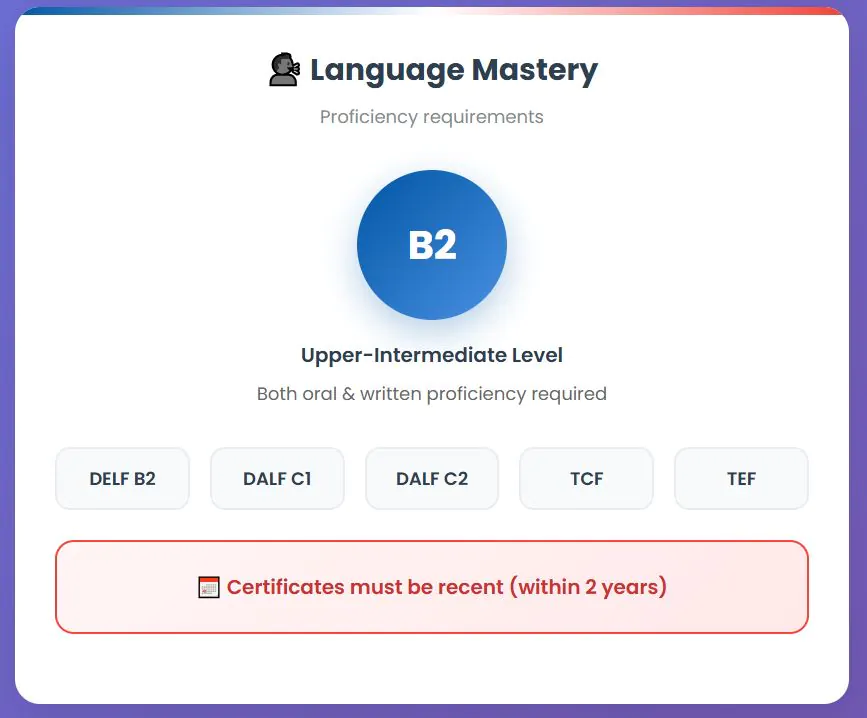
France assesses your assimilation into the French community through knowledge of French history, culture, and society. The government provides a “citizen’s book” covering required knowledge about French institutions, history, and principles.

8th – Belgium
Belgium, home to some of the most important EU institutions, has citizenship equirements that reflect their complex multilingual society.
Language requirements vary by region, creating different pathways depending on where you establish residence.
If you live in the Flemish region, you need Dutch proficiency. In Wallonia, French is required. The German-speaking community demands German skills. This regional approach means your location determines your language challenge entirely.
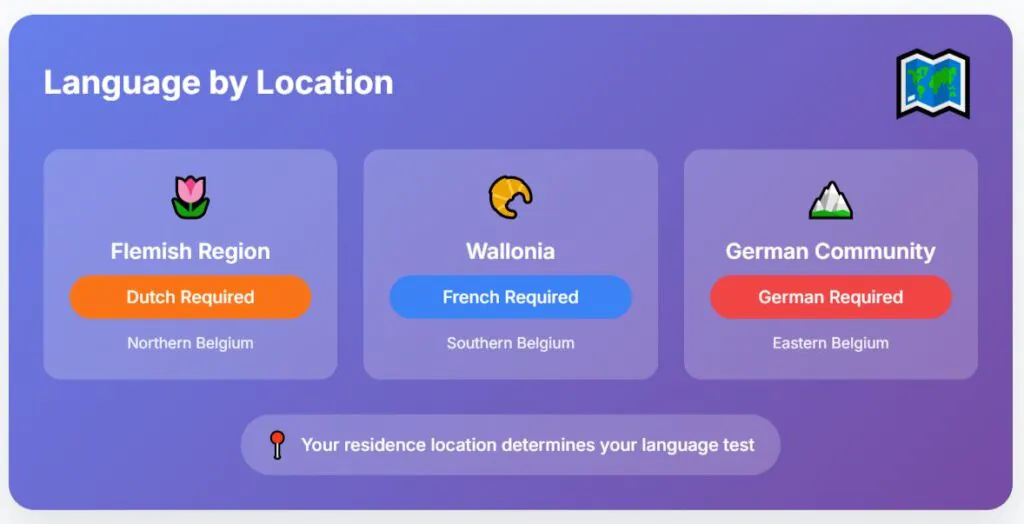
You need 5 years of continuous legal residence plus proof of social integration. You can demonstrate integration through 400 hours of approved vocational training, completing an official integration program, or working continuously for five years as an employee or self-employed person. Spouses of Belgian citizens only need 5 years of residence and 3 years of marriage.
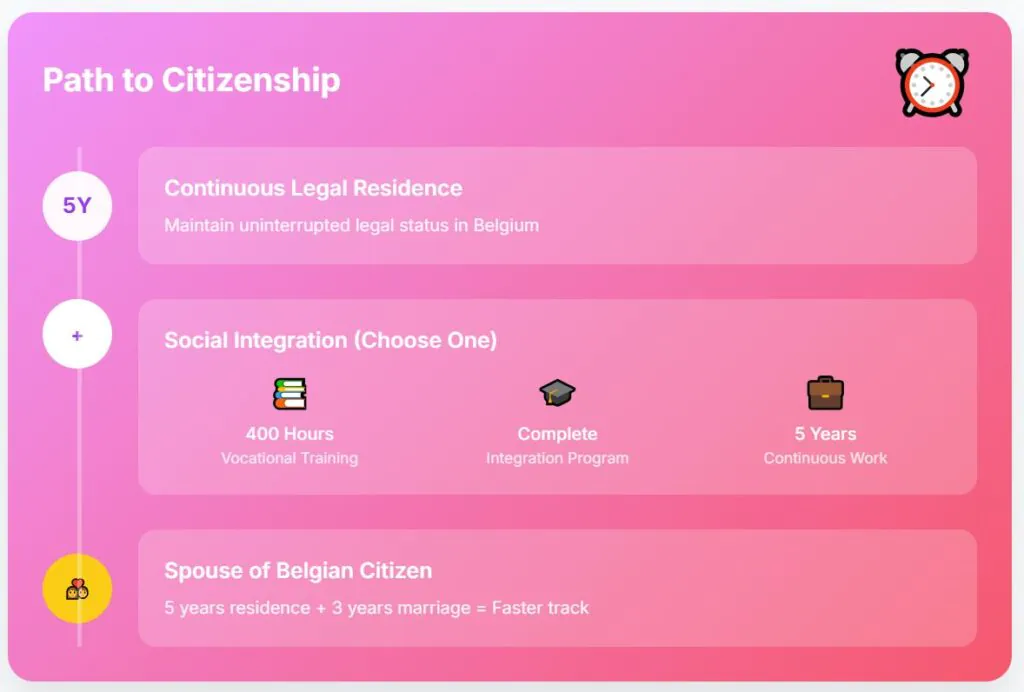
Belgium has no problems with new citizens keeping their previous citizenships.
From Belgium, we jump into the top 7 countries – these are places where citizenship is feasible in a short period of time, with fewer obstacles.
FREE FOR A LIMITED TIME: Grab your Expat Wealth & Lifestyle Compass ($108 value) today! Includes our 74-page guide of Affordable European Cities, our Zero-Tax countries report, and our expat checklist. https://bit.ly/ExpatWealthLifestyleCompass Join us here before this offer ends.
7th – Luxembourg: Small Country, Big Opportunities
Who would guess that one of the richest countries in the world also has one of the most accessible passports to obtain in Europe?
You need just 5 years of legal residence, with only the final year required to be uninterrupted. If you’re married to a Luxembourgish citizen, you can get citizenship after 3 years of marriage even while living outside Luxembourg.
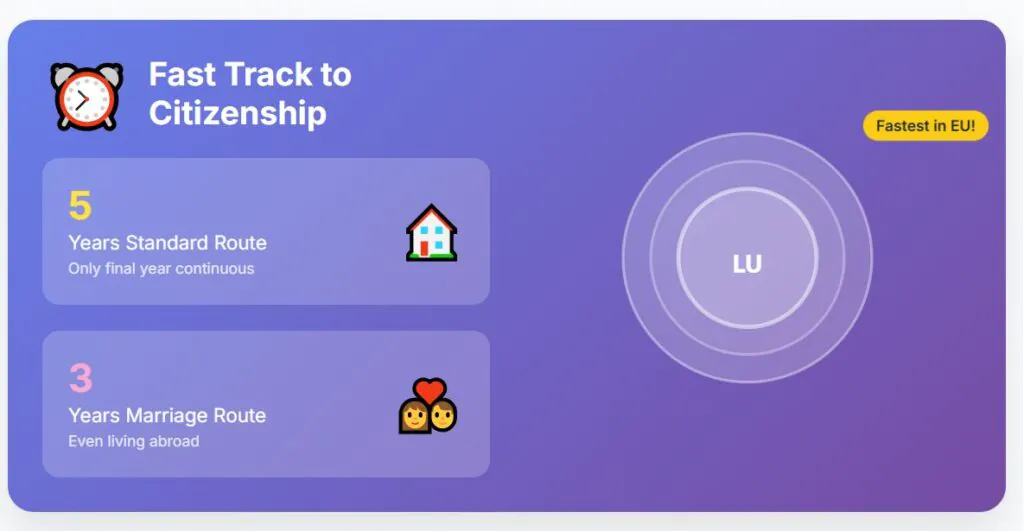
The Luxembourgish language requirements are B1 for speaking and A2 for listening. These levels are surprisingly reasonable compared to the B2 requirements in countries like Denmark or Greece. The trilingual environment actually helps with language acquisition since you’re surrounded by French, German, and Luxembourgish daily.
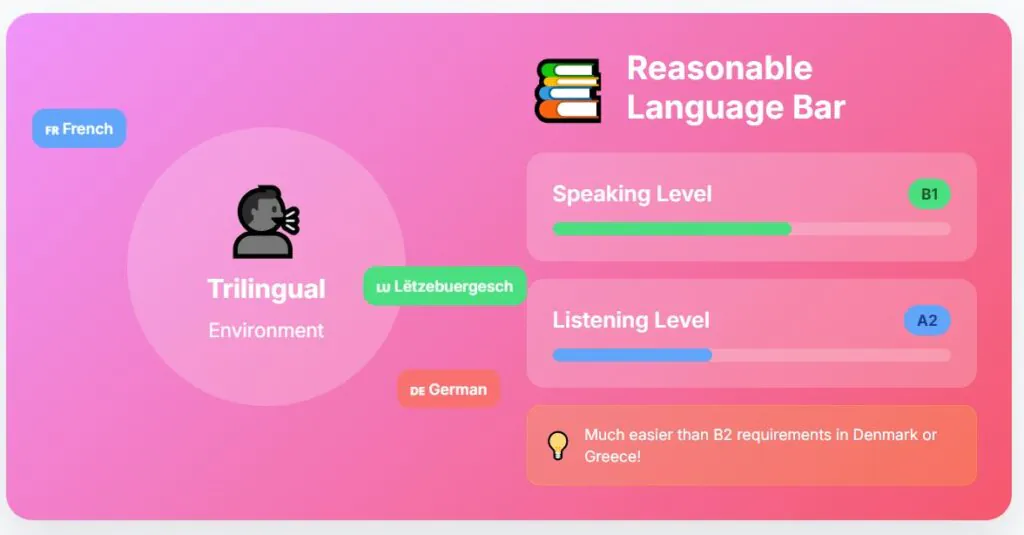
You must complete the “Vivre ensemble au Grand-Duché de Luxembourg” course or pass the related test covering Luxembourg’s history, culture, and societal values.
Luxembourg permits dual citizenship, removing the difficult choice of renouncing your original nationality. The combination of short residence requirements, manageable language standards, and dual citizenship acceptance creates an accessible path to become a citizen of this wealthy country.
6th – Portugal: The Changing Landscape
Portugal currently offers one of Europe’s most accessible citizenship paths, but massive changes are coming that will shock applicants. The current 5-year requirement with A2 Portuguese proficiency is about to become 10 years with additional tests – a complete transformation.
Right now, you need just 5 years of legal residency, whether continuous or cumulative. The A2 Portuguese language requirement gets demonstrated through the CIPLE exam, representing basic proficiency that most people can achieve with moderate effort.
(And Portuguese is not difficult – even I learned it!)
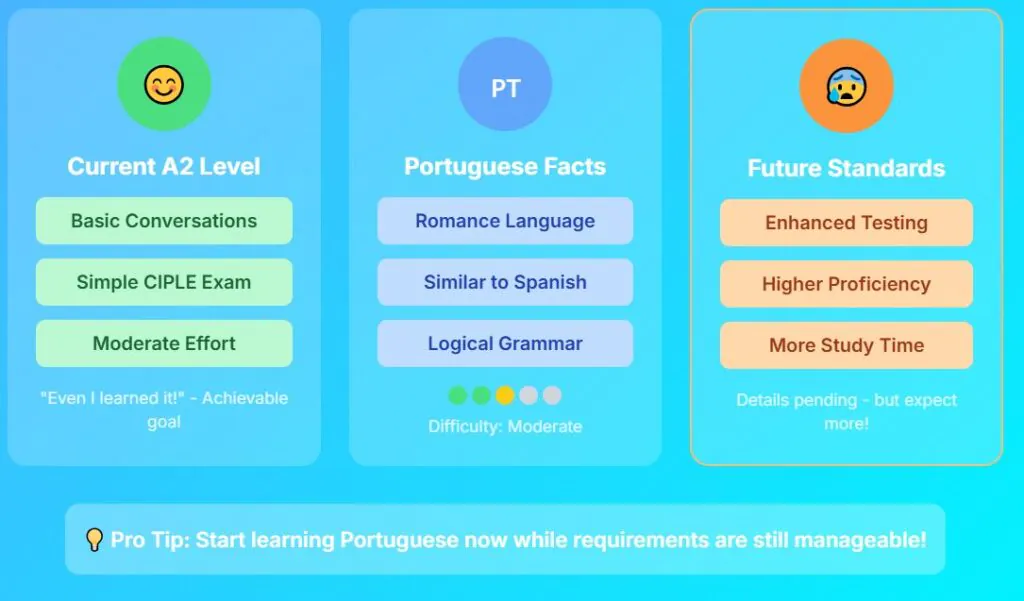
You also need to show community integration proof, but the standards remain reasonable.
Here’s the shocking part: a draft law published in June 2025 proposes increasing the general residency requirement to 10 years for most applicants. The upcoming changes also include stricter language requirements, though specific details are still pending.
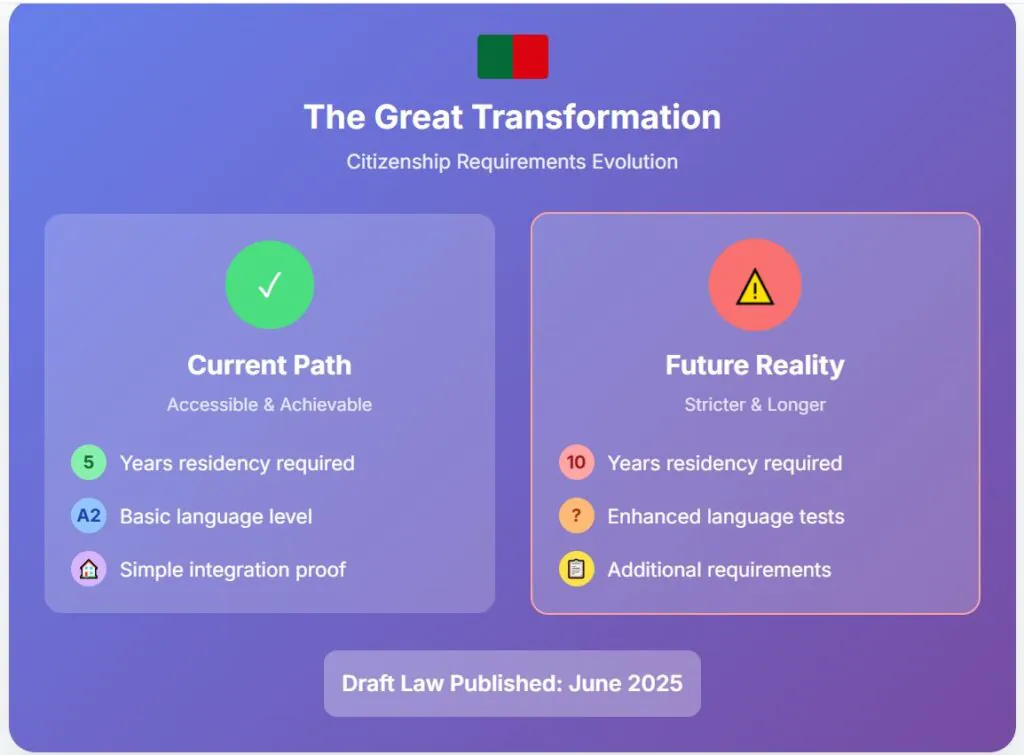
5th – Germany
Germany just revolutionized EU citizenship acquisition with changes that took effect in June 27, 2024, transforming it from restrictive to attractive. The country that once demanded you renounce your original citizenship now embraces dual nationality – a complete philosophical shift.
The new residence requirement dropped from 8 years to just 5 years. Even better, Germany introduced a 3-year fast track for exceptional integration. This accelerated pathway rewards people who demonstrate special integration efforts like exceptional performance at work, in school, or through significant volunteer contributions.
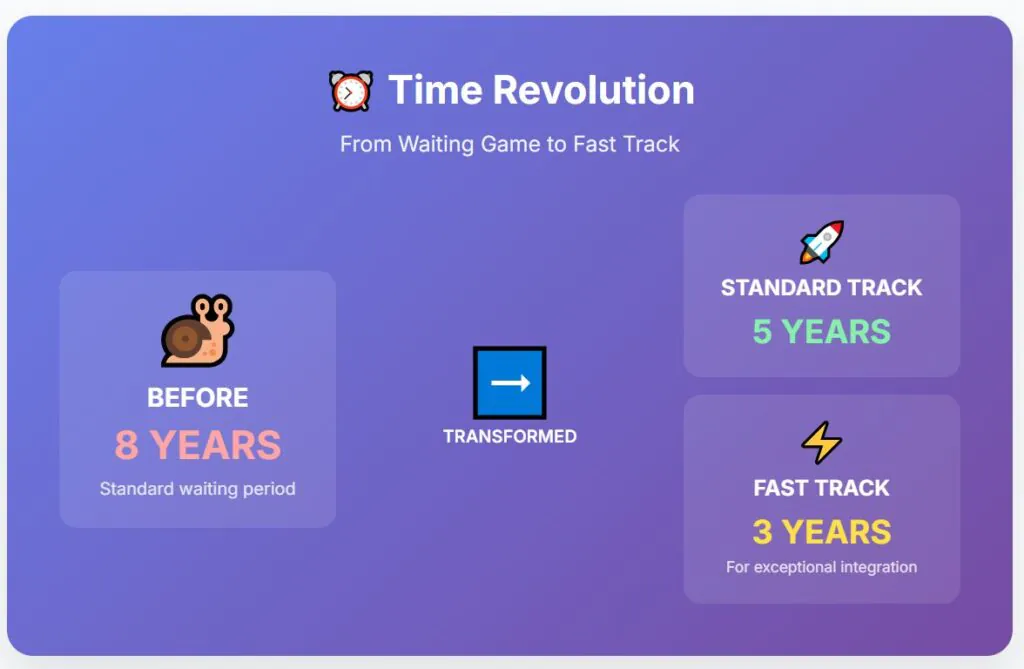
You still need B1 German proficiency through recognized tests like Goethe-Zertifikat, or you can prove it with German education credentials. The “Life in Germany” test covering the legal system and social norms remains mandatory, unless you have relevant German degrees.
The biggest game-changer is allowing dual citizenship. Previously, most applicants had to choose between their original passport and German citizenship. This single requirement deterred countless potential applicants, especially from countries that don’t permit renunciation.

You must still demonstrate financial stability, maintain a clean criminal record, and declare commitment to democratic principles. Germany’s 2024 reforms represent the most significant liberalization of citizenship laws in recent EU history, making it suddenly very competitive.
4th – Malta
Malta offers something unique so far in this ranking – English as an official language removes the biggest barrier for many applicants.
While English proficiency helps enormously, Malta still requires “good knowledge of English and Maltese” – but how strictly is this enforced?
Here’s where Malta gets interesting. They don’t specify a particular CEFR level for English or Maltese proficiency. No formal language test requirement exists, which contrasts sharply with countries demanding B1 or B2 certificates.
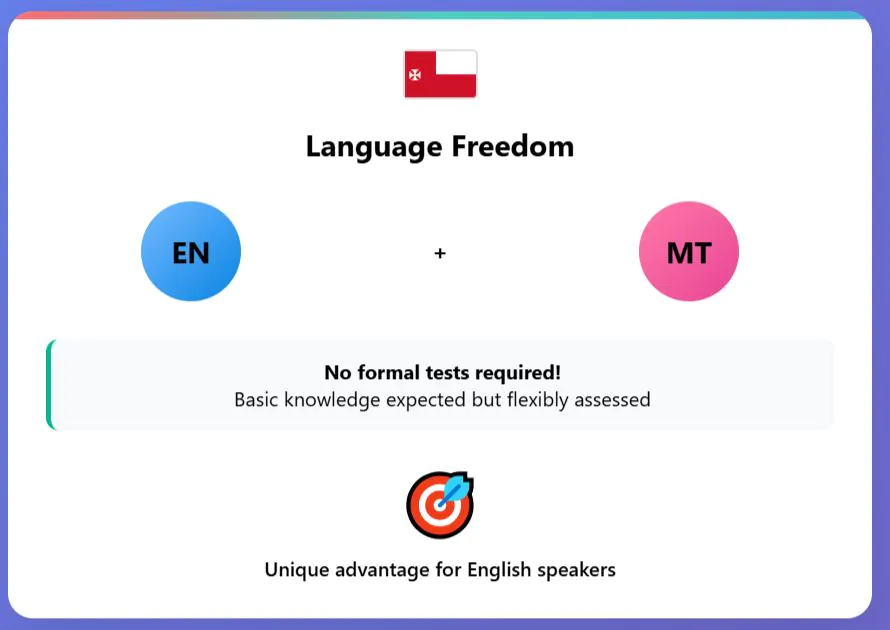
The residence requirement works differently too. You need 12 months of continuous residence immediately before applying, plus 4 years aggregate during the preceding 6 years. This effective 5-year timeline ranks among the shorter requirements in the EU.
Malta permits dual citizenship without restrictions, so you keep your original passport. This combination of short residence requirements, familiar language environment, and dual citizenship acceptance creates one of the most accessible paths to EU citizenship for English speakers.
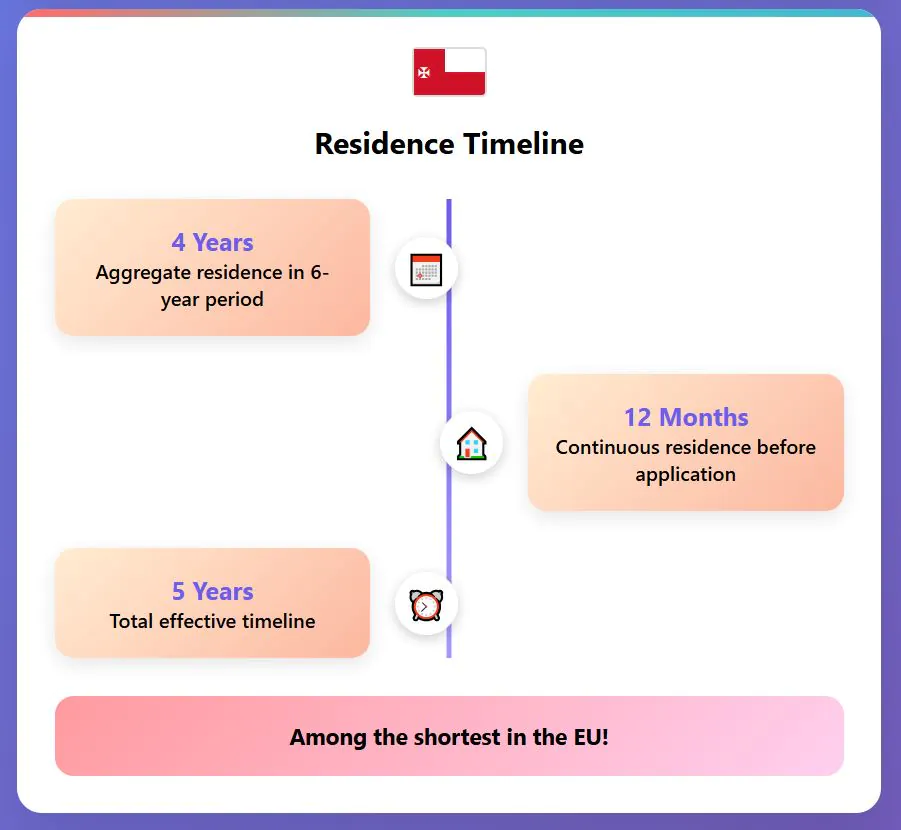
Now we will enter the top 3 – countries with even easier or simpler requirements for citizenship.
3rd – Ireland
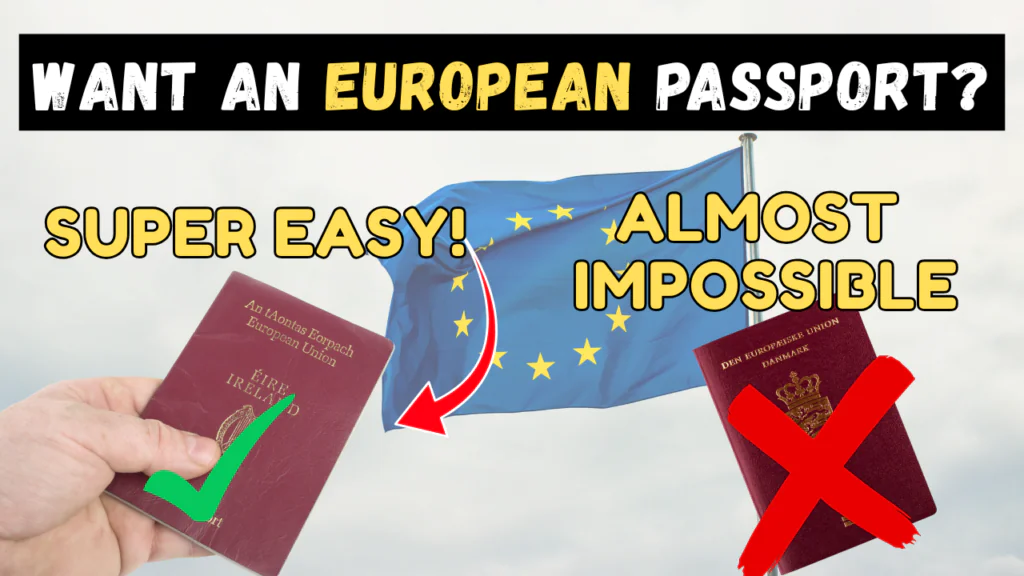
Ireland emerges as the 3rd most accessible EU citizenship, with requirements that eliminate most traditional barriers. With no formal language test, no civic knowledge exam, and only 5 years residence required, it seems almost too good to be true.
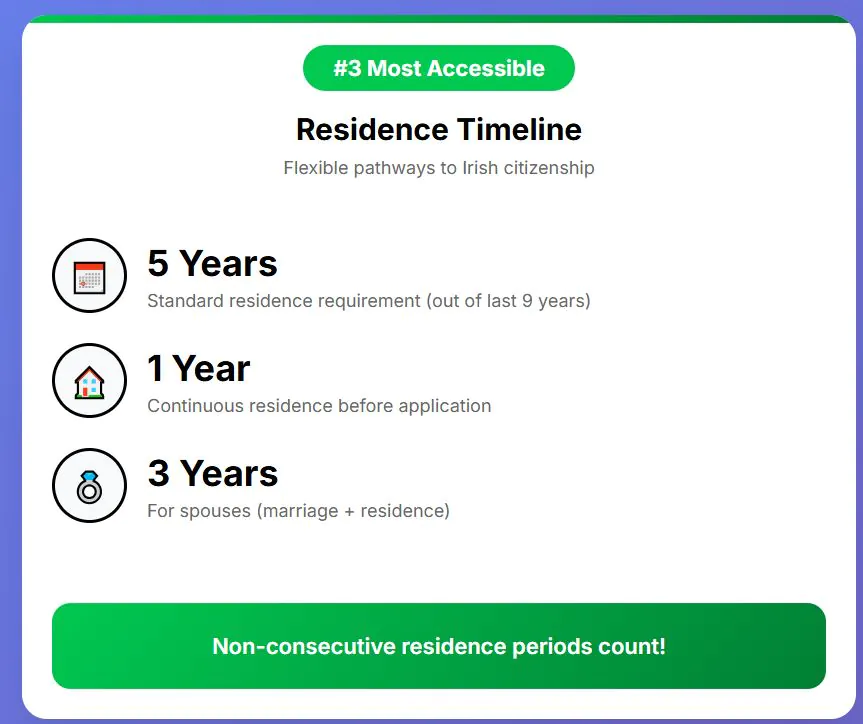
You need 5 years of “reckonable residence” out of the last 9 years, including 1 continuous year immediately before applying. This flexible calculation lets you count periods of residence that don’t need to be consecutive, unlike countries demanding uninterrupted residence. For spouses of Irish citizens, the timeline drops to just 3 years of marriage plus 3 years of residence.
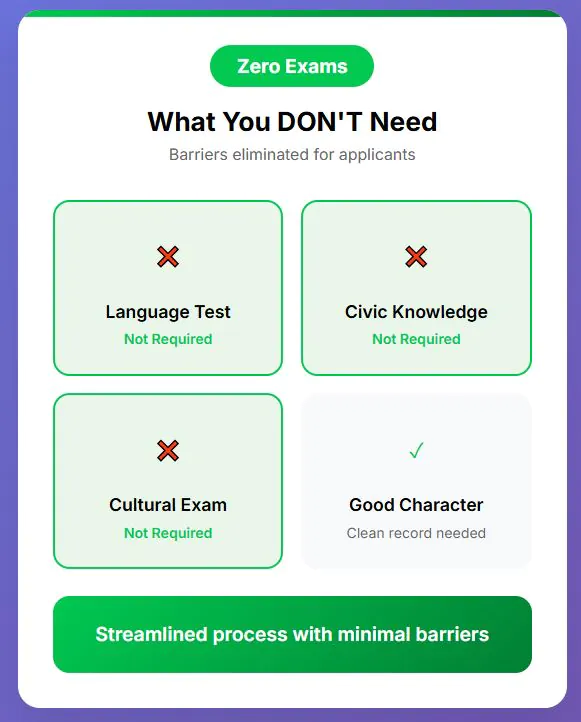
The “good character” assessment requires a clean criminal record and no serious driving offenses. You must also make a declaration of loyalty to Ireland during the citizenship ceremony, committing to respect democratic values and the rule of law.
No standardized language exams, no memorizing constitutional articles, no cultural knowledge tests – Ireland’s streamlined process, English language environment, and full dual citizenship acceptance creates a path that is almost as easy as the next country…
Sweden: The Unexpected Champion of EU Citizenship Accessibility
Sweden claims the top spot in our ranking with a combination of features that creates the most accessible EU citizenship pathway. While not as obviously easy as Ireland for English speakers, Sweden’s overall requirements create the lowest barriers for the widest range of applicants.
Sweden requires just 5 years of habitual residence, dropping to 3 years if you’re married to a Swedish citizen and have lived together for 2 years. Currently, Sweden has no formal language test requirement for citizenship. There’s also no explicit civic or cultural knowledge test under current rules.
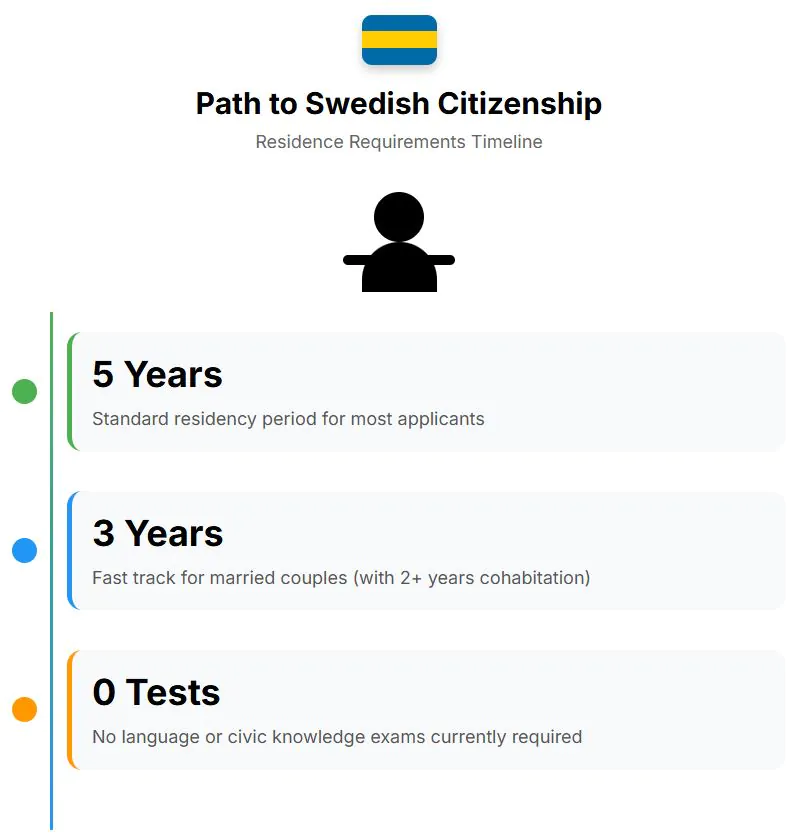
Sweden permits dual citizenship, allowing you to keep your original passport while gaining Swedish nationality.
But here’s important timing information: major changes are coming in the second half of 2025. The residence requirement might increase to 8 years, and Sweden might introduce a B1 Swedish language test for reading and listening, plus A2 for writing and speaking. They’re also planning to add a comprehensive exam covering Swedish society, culture, history, geography, and civic knowledge.
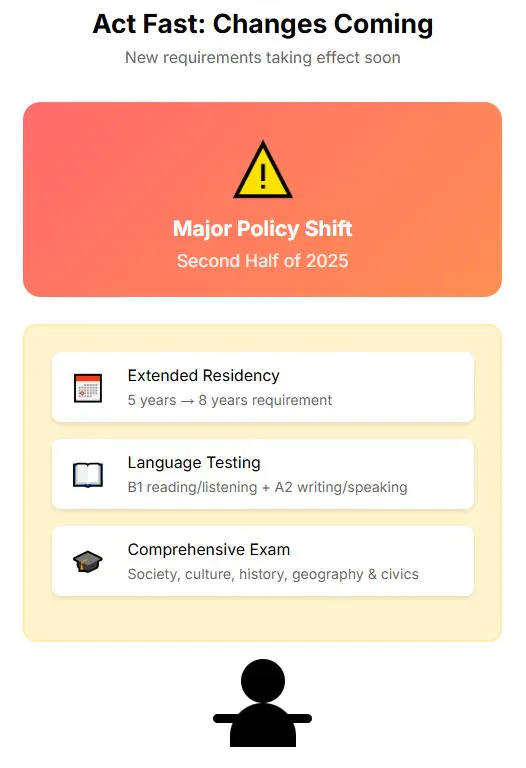
Right now, Sweden’s combination of reasonable timelines, manageable requirements, and inclusive policies makes it the easiest EU citizenship to obtain without investment.
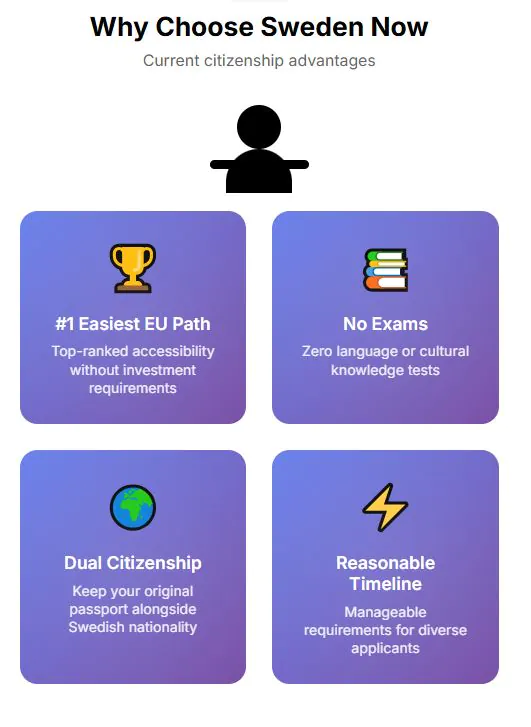
But wait… at the beginning I said I would rank 27 countries, and I just ranked 26. There is one lacking, and it is the one I mentioned at the very beginning of this article. A complete outlier – a country that might be even easier than Sweden – or might be harder than most of this list, and it all depends on where you come from – and a certain dose of colonial history.
The Outlier Spain: Two-Speed Citizenship Based on Your Origins
Spain operates a fascinating two-tier citizenship system where your background dramatically affects your timeline. The difference between 2 years and 10 years depends entirely on your nationality or heritage – creating wildly different experiences for applicants.
If you’re from Latin America, Portugal, or have Sephardic Jewish ancestry, you get the fast track with just 2 years of legal residence. Everyone else faces the standard 10-year requirement – that’s five times longer for the same passport.
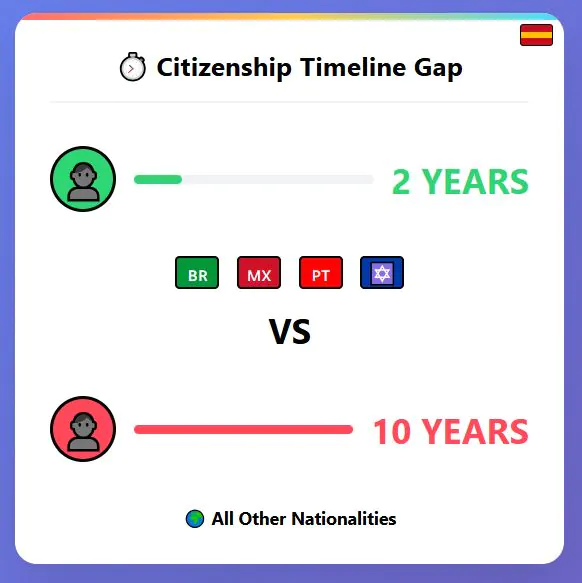
The privileged groups also get major exemptions. No Spanish language test required, even though others need A2 proficiency. No renouncing your original citizenship either, while standard applicants must choose between passports. Both groups still take the CCSE test covering Spanish constitution and culture, administered by Instituto Cervantes.
Additional fast tracks exist for specific situations. Refugees need 5 years. Those married to Spanish citizens get citizenship after just 1 year of marriage. Born in Spain but not a citizen? Also 1 year.
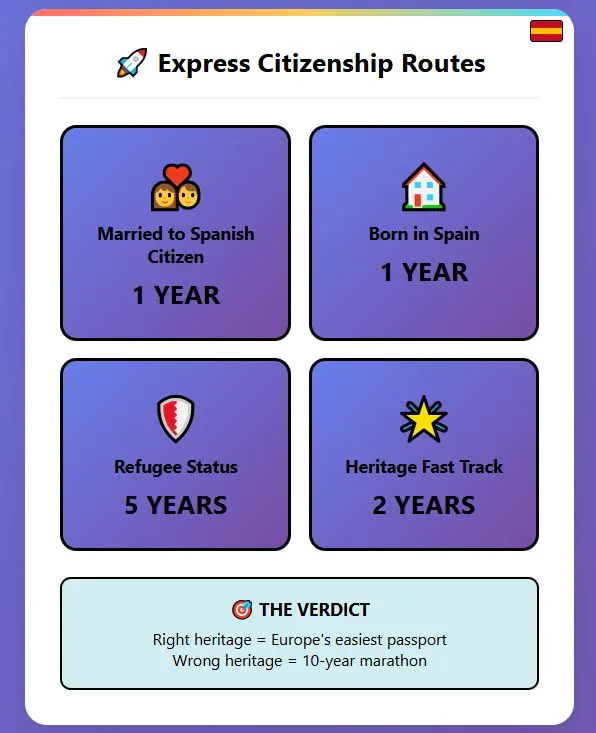
Spain’s dual system reflects their historical connections and colonial past. If you qualify for fast track citizenship, Spain becomes one of Europe’s easiest passports to obtain – in just 2 years. If you don’t, it ranks among the most demanding with that 10-year wait.
Now you might be thinking: WHERE to live in these countries?
What are the best cities in Europe, off the radar, for expats to move and enjoy their golden years without spending a fortune?
It was thinking about that I made my MOST IMPORTANT article ever, with the 10 best small cities in Europe to live in – and surprise: many of them are EVEN CHEAPER than those you saw in this article.
Levi Borba is the founder of expatriateconsultancy.com, creator of the channel The Expat, and best-selling author. You can find him on X here. Some of the links above might be affiliated links, meaning the author earns a small commission if you make a purchase.



